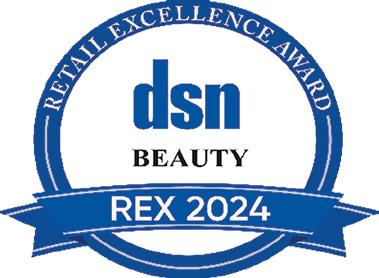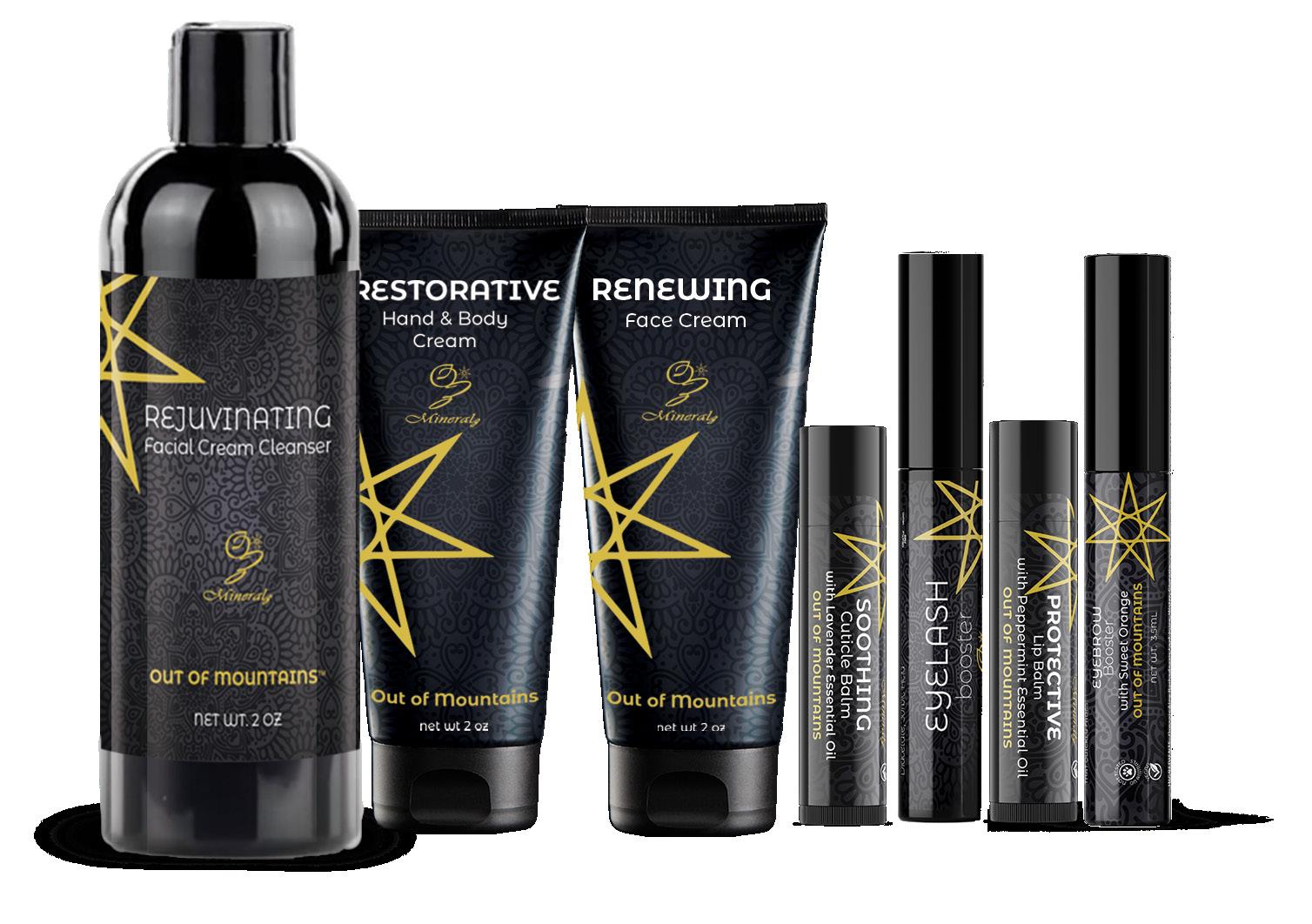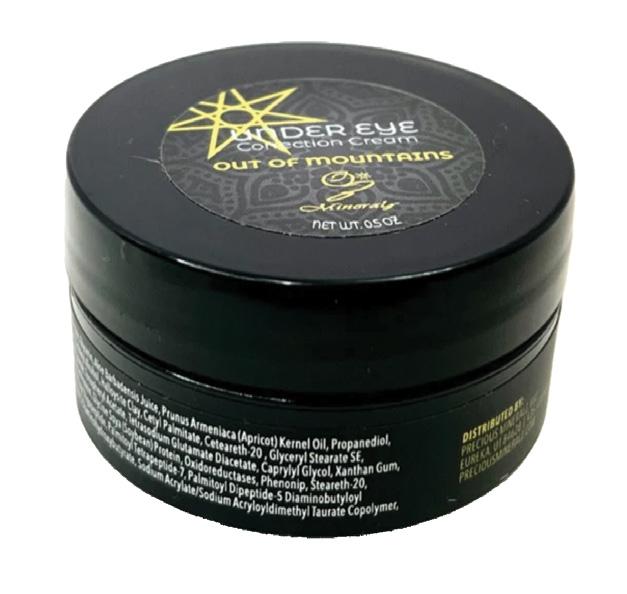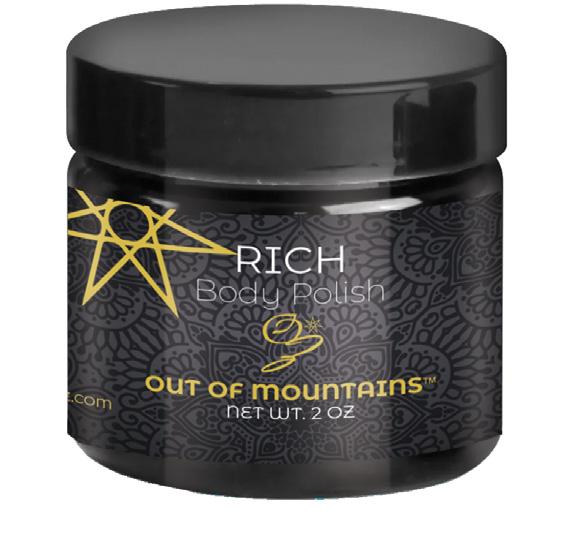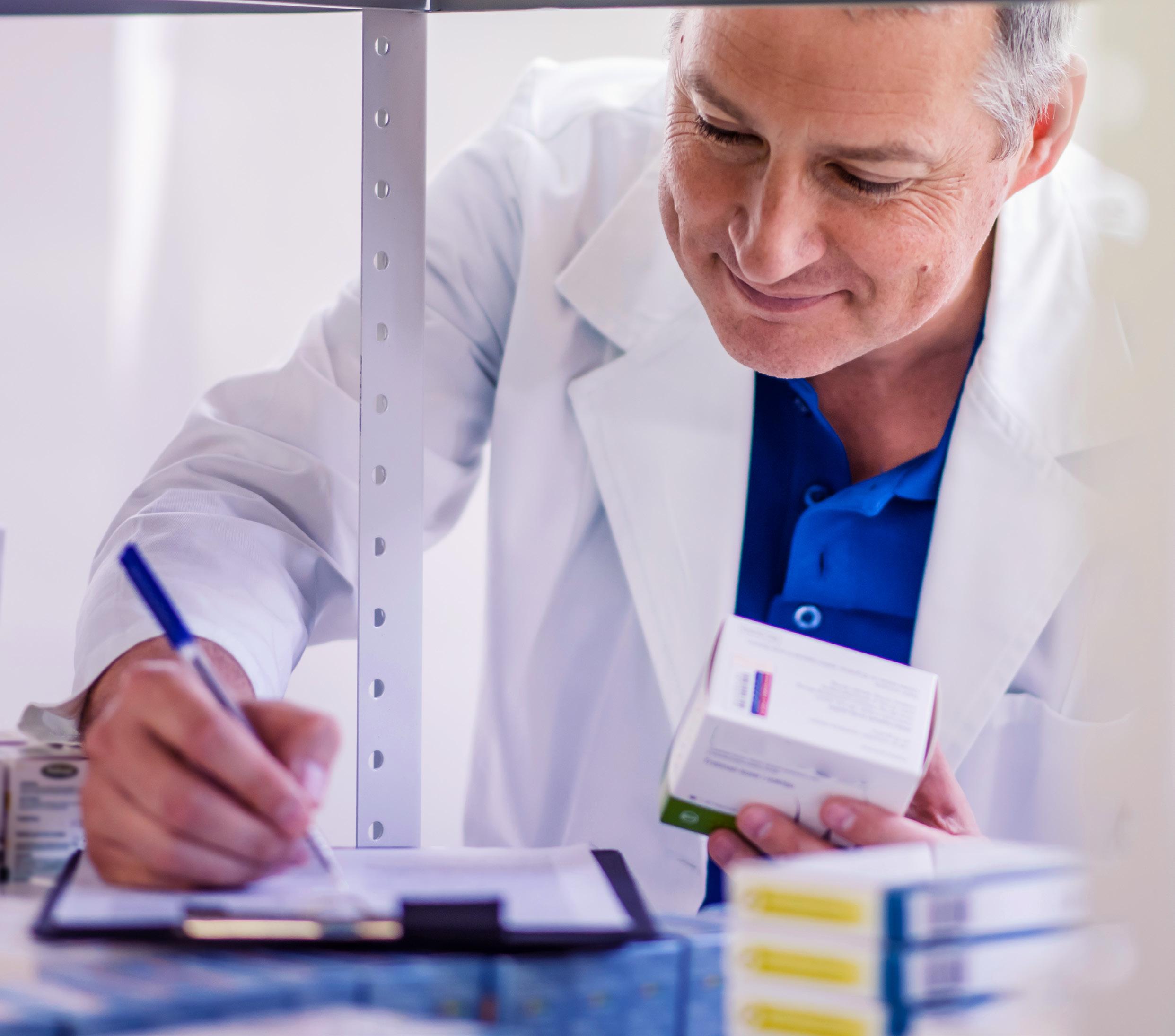

NEW LOOK
Same products you know and trust
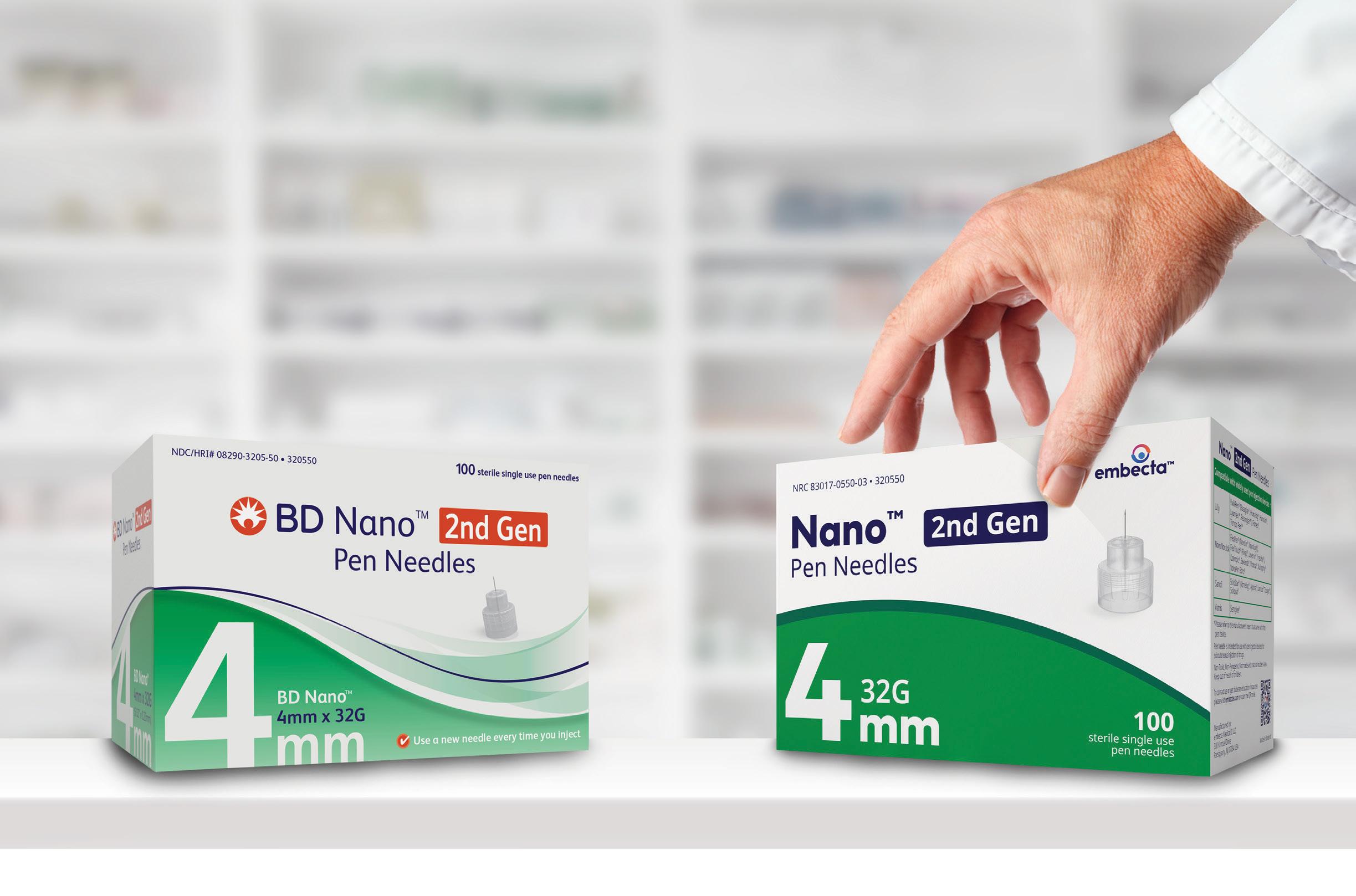

Package Design
Color of the box aligns to needle length for both pen needles and insulin syringes.
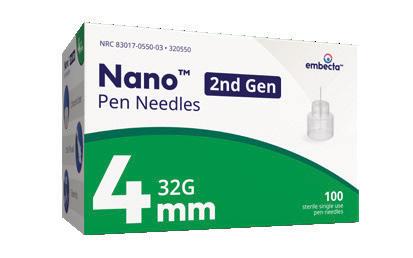
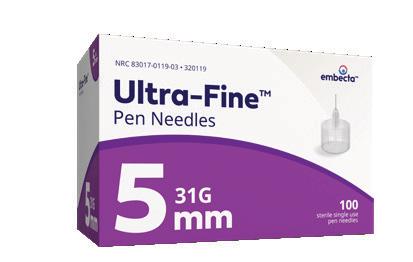
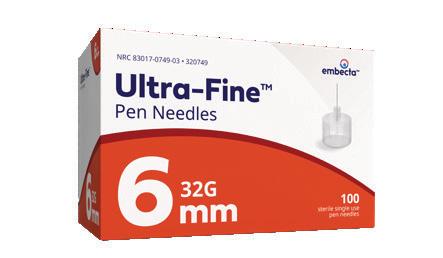
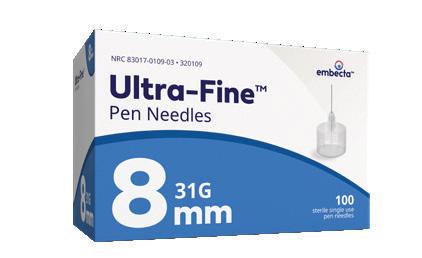
Product Brand Name
Names have been updated, search for Nano 2nd Gen or Ultra-Fine.
Product image
Helps you see the product on the packaging, so you always know what you are dispensing.
Learn more about our new look coming soon to your pharmacy! Visit embecta.com/hcp/packaging The new embecta packaging is designed to help pharmacists identify and dispense the

embecta Insulin Syringes
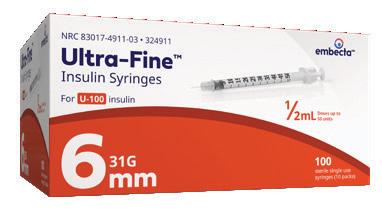
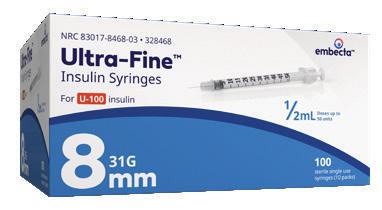
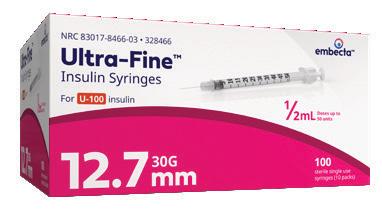
Each needle length is available in various barrel sizes, that are clearly marked on the box. (3/10mL, 1/2mL, 1mL)

Green = 4mm Purple = 5mm
Orange = 6mm Blue = 8mm Pink = 12.7mm

Facebook.com/DrugStoreNews
linkedin.com/company/drug-store-news/ instagram.com/dsn_media
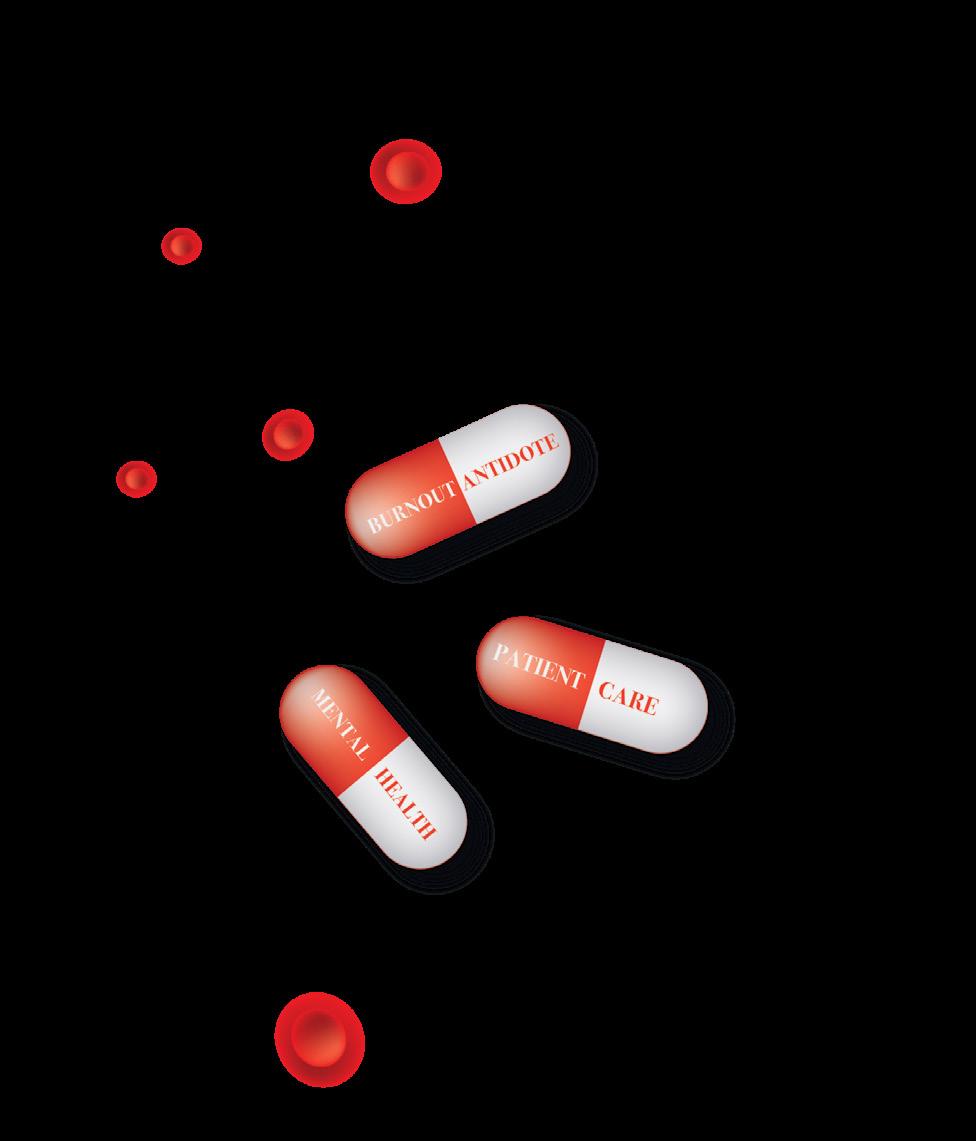
INSIDE BEAUTY: REX AWARDS
DSN’s Retail Excellence Awards recognize manufacturers for innovations in beauty
INSIDE BEAUTY: SUN CARE
The future of the sun care category is bright, thanks to innovations and educational
PHARMACY: GENERICS
Despite headwinds, generic drug companies continue to implement innovative solutions to serve
HEALTH: DIABETES CARE
Retail pharmacies could ramp up educational programs, rethink merchandising efforts and address product frustrations to make shopping easier for diabetics
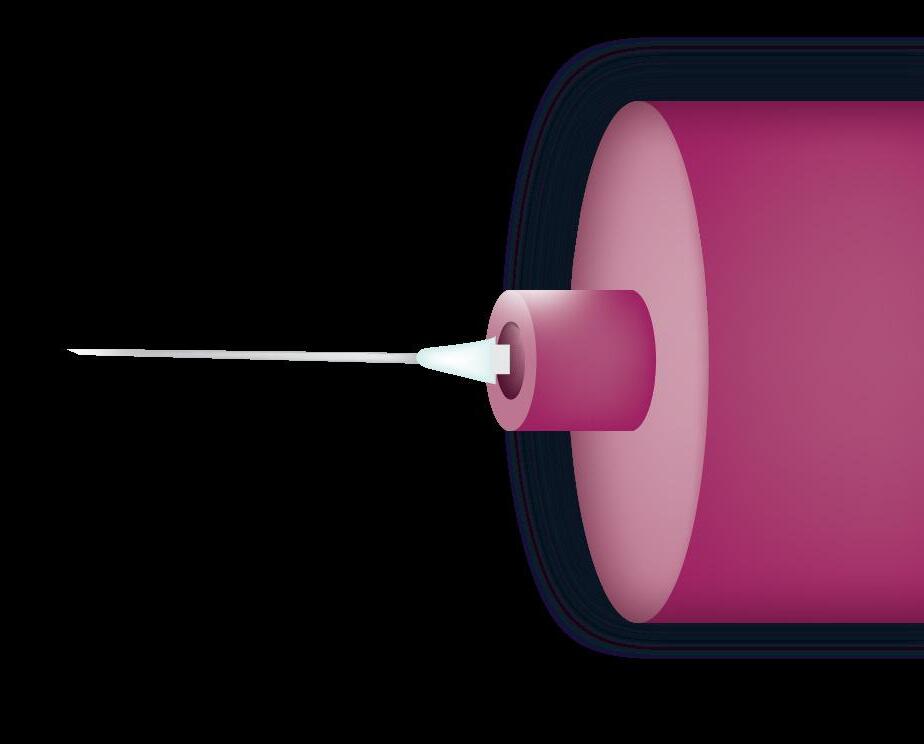









Boiling Point
As pharmacists face burn out and stress, retailers explore ways to help

“DEALING WITH THE PUBLIC CAN BE STRESSFUL.”
— Kurt Proctor, Ph.D., R.Ph., senior vice president of strategic initiatives, the National Community Pharmacists Association
The stress that pharmacists and technicians experienced during–and after–the pandemic has been well documented
As the pharmacy journal, U.S. Pharmacist, reported, when the country went on lock-down things went haywire: prescription volume increased overnight, drive-through lanes expanded dramatically, testing and vaccinations accelerated and on and on it went.
“These challenges and increased responsibilities in community pharmacy have created ideal conditions to leave burned-out pharmacy personnel in the aftermath,” the journal reported back in 2021.
Aside from workplace conditions, pharmacy workers had to deal with belligerent shoppers who ignored masking protocols, harassment, assaults from customers and more. The problems occurred across all practice settings, but the problems were particularly acute at chain pharmacies.
COVID-19 might be a thing of the past, but the stress on pharmacists and technicians remains. For our cover story this month (page 16), we look at some of the issues and steps retailers—national and regional—are taking to provide relief, services and support for their people. In addition to addressing mental health concerns among store staff, retailers are also forced to differentiate between day-to-day stress and over-the-top burnout symptoms that might require outside help.
“Dealing with the public can be stressful,” said Kurt Proctor, Ph.D., R.Ph., senior vice president of strategic initiatives at the National Community Pharmacists Association. “A chain pharmacist may be dealing with stress from KPIs he’s expected to maintain, that’s one type of thing. If you’re independent, it’s your business, your life, your family, your legacy. How can you maintain profitability in a challenging environment? Are you going to be able to make payroll next week?”
Our reporter found that mental health, development programs and role redefinition are no longer optional—they’re essential. The shifting paradigm of pharmacies is revealing a future that is not just about addressing burnout. It’s about building workplaces pharmacists and the staff want to be in.

EDITORIAL
Managing
Senior
DESIGN/PRODUCTION/MARKETING
Production
SUBSCRIPTION
Subscription

Quality You Can Count On From A Partner You Can Trust
You need a partner with vertical manufacturing strength, a deep pipeline of products, and the passion to deliver for your patients.
Camber is a leader in product approvals and launches, many of which are large molecule, specialty, and complex generics. Our commitment to quality, service and consistent supply stands out from the crowd.
Camber is growing to meet the needs of an aging population.
Let’s grow together!

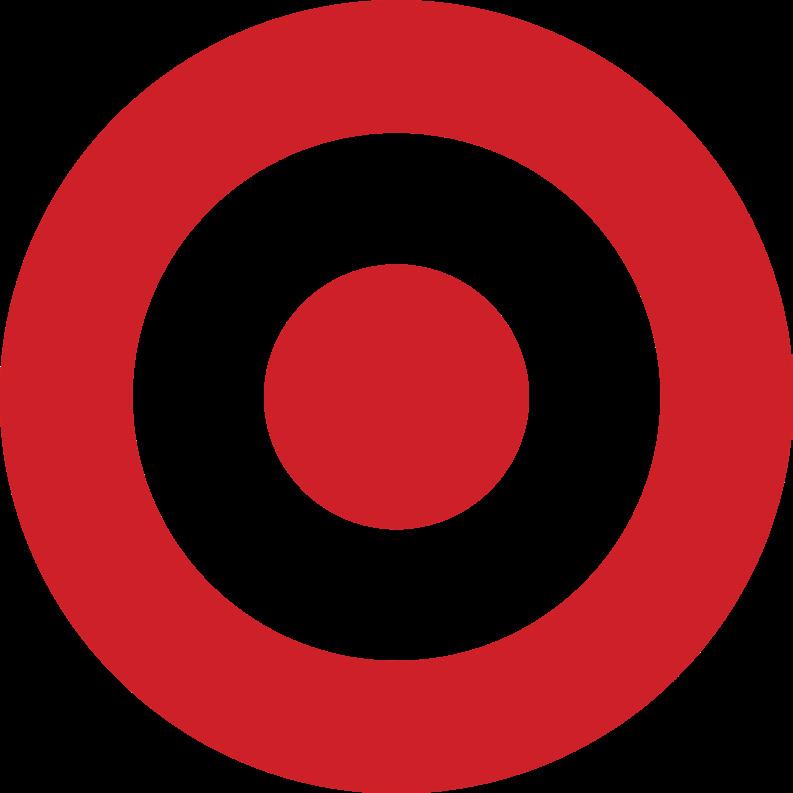
TARGET KICKS OFF WELLNESS SUMMIT IN SEPTEMBER
Target is seeking emerging, innovative suppliers coming Wellness Summit at Target headquarters on Sept. 4. Held in conjunction with RangeMe, the event will highlight new and better-for-you products in the food and beverage and health and wellness spaces, with a focus on functional items like high-protein snacks, clean-label formulations, vitamins, supplements and other wellness-driven innovations.

Areas of particular interest include women’s health, hydration, plant-based nutrition, greens and other forward-thinking categories. Target is especially interested in connecting with brands that offer fresh perspectives and unique market value. The opportunities for suppliers are numerous, including a chance to showcase their brand and products, visibility with engaged buyers and new opportunities to grow your brand.
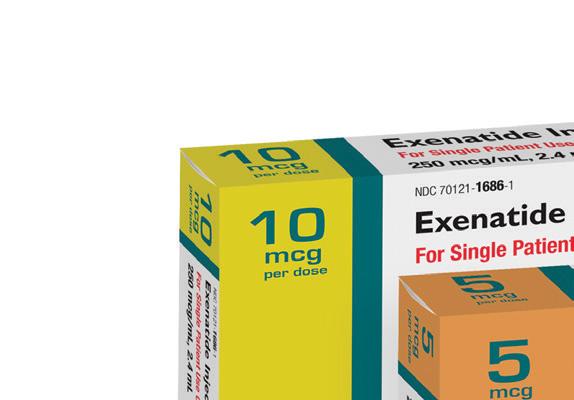
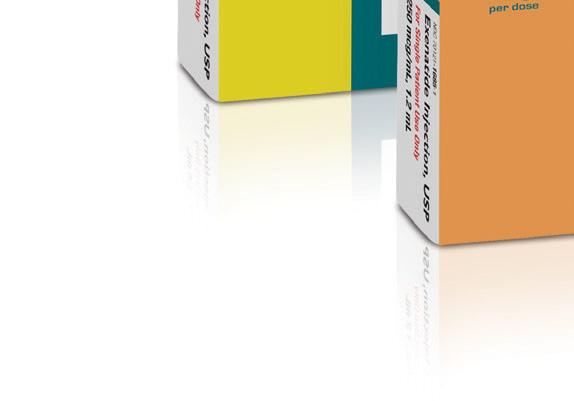
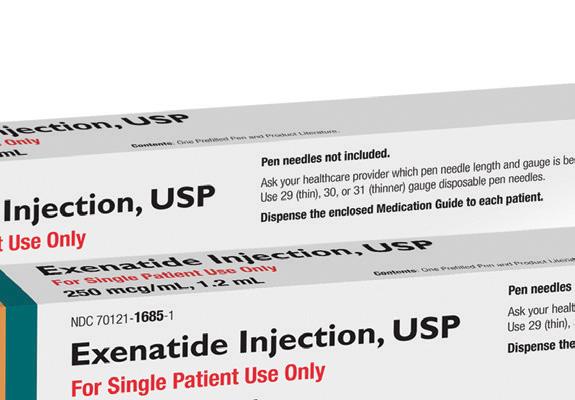
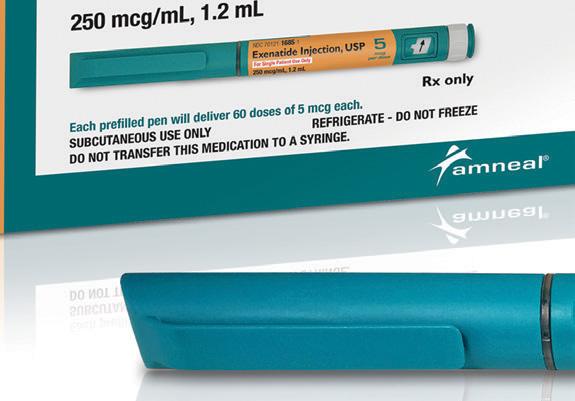

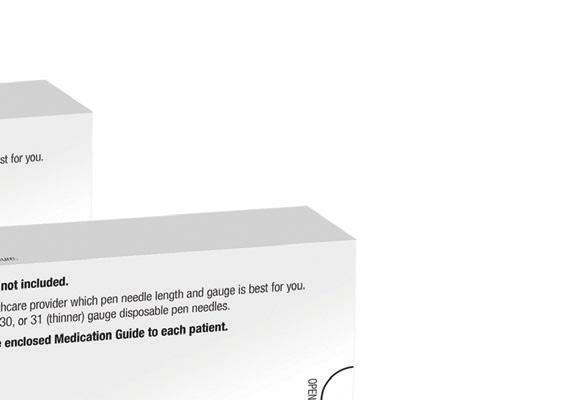
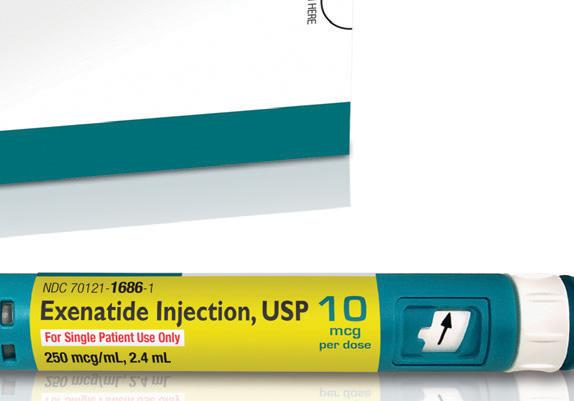



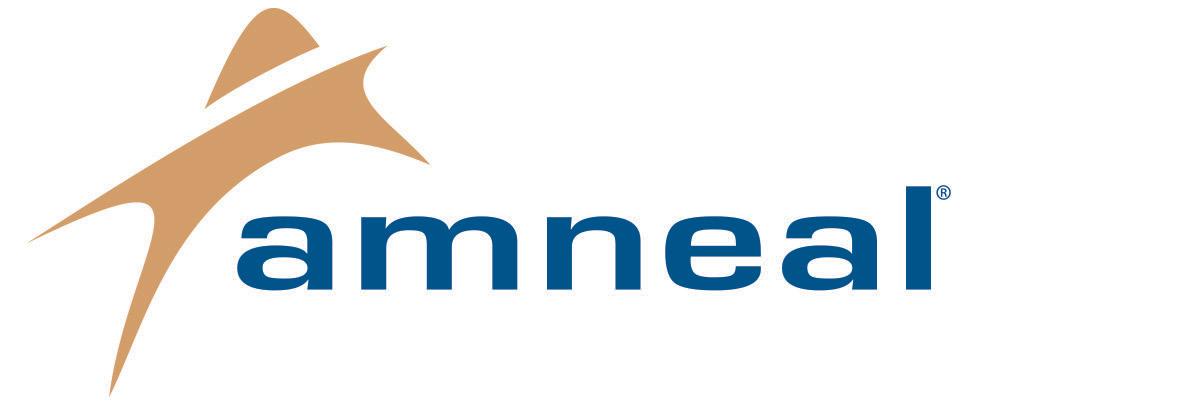
WALGREENS, KFF’S GREATER THAN OFFER FREE HIV/STD TESTING
Walgreens and Greater Than HIV/STDs, a public information campaign from KFF, joined with health departments and community organizations to provide free rapid HIV, syphilis and hepatitis C testing at more than 575 Walgreens stores on June 27.
The groups say it was the nation’s largest National HIV Testing Day event.
With more than 415 local testing partners in nearly all states, Washington and Puerto Rico, this year’s activation marked a record level of participation in the partnership’s 15-year history. Since 2011, KFF’s Greater Than HIV and Walgreens National HIV Community Partnership has provided more than 93,000 free HIV/STD tests through the in-store NHTD program.
“This year’s record-breaking National HIV Testing Day activation shows the power of public-private partnership,” KFF Senior Vice President Tina Hoff said. “Together with Walgreens and hundreds of community organizations from across the nation, we’re reaching more people than ever with free, fast HIV and STD testing—and expanding awareness about powerful new prevention tools like PrEP and doxy-PEP, along with advances in treatment.”


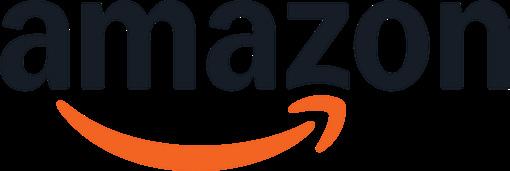


“ This year’s record-breaking National HIV Testing Day activation shows the power of public-private partnership”
—Tina Hoff KFF Senior Vice President
“The Greater Than campaign plays a vital role in reaching those in need with accessible information about the latest in HIV and STD testing, prevention and treatment,” said Rick Gates, chief pharmacy officer, Walgreens. “All Walgreens pharmacists receive HIV prevention and destigmatization training, and about 3,000 of our specialty and community pharmacists have completed advanced training in HIV treatment and prevention. Partnering once again with KFF strengthens our ability to help patients access the care and support they need most.”
AMAZON RESHUFFLES HEALTHCARE BIZ
Amazon is reportedly reorganizing its healthcare business into six pillars, CNBC reported, noting that the change follows the loss of several top health executives in recent months.
The report noted that Amazon has struggled to find a consistent strategy in the healthcare market after acquiring PillPack and One Medical and launching some of its own services.
CNBC reported that Amazon Health Services will be divided into six new units with the aim of creating a simpler structure. As part of the effort, Amazon has tapped a number of longtime Amazon leaders and promoted some One Medical executives to oversee the divisions. Neil Lindsay, senior vice president of Amazon Health Services told CNBC in an interview that the company has been working on the overhaul for the past several months.
“Our leadership team has been focused on simplifying our structure to move faster and continue to innovate effectively,” Lindsay said in a video chat. “One of the problems we’re trying to solve is the fragmented experience for patients and customers that’s common in healthcare,” the report said. dsn

New and Noteworthy
HRG’s five notable products from June
1 3

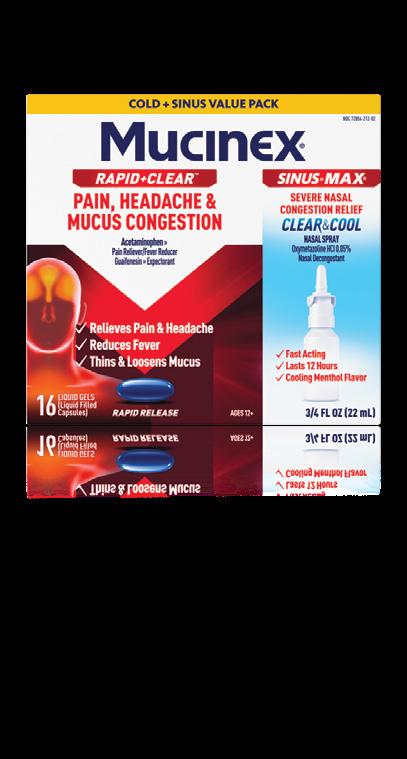
2
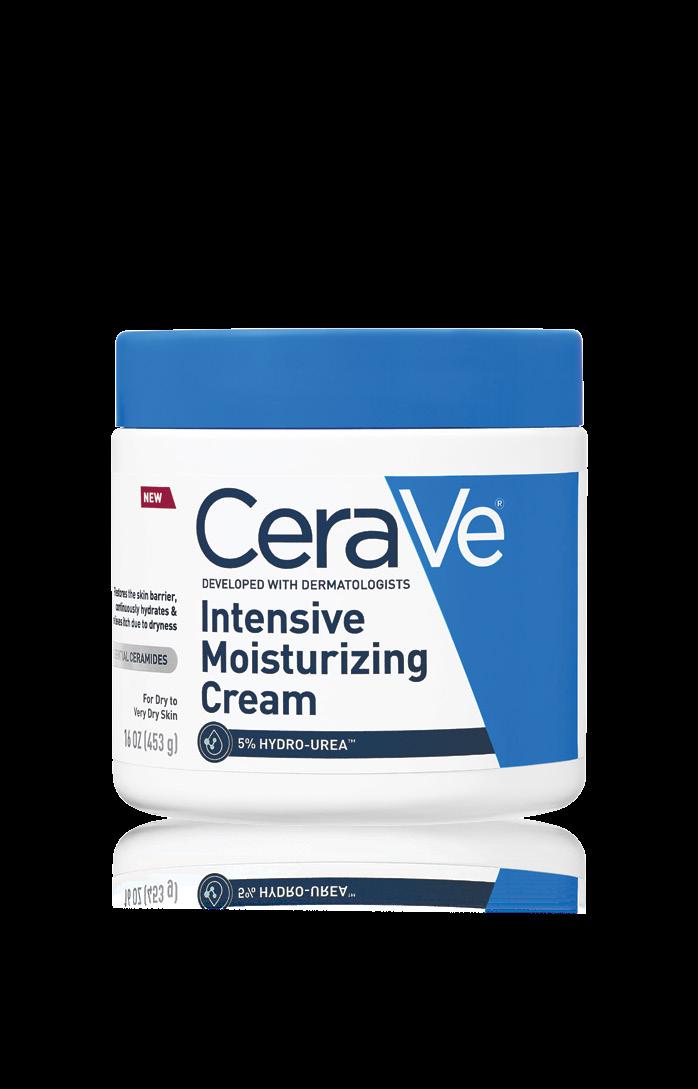
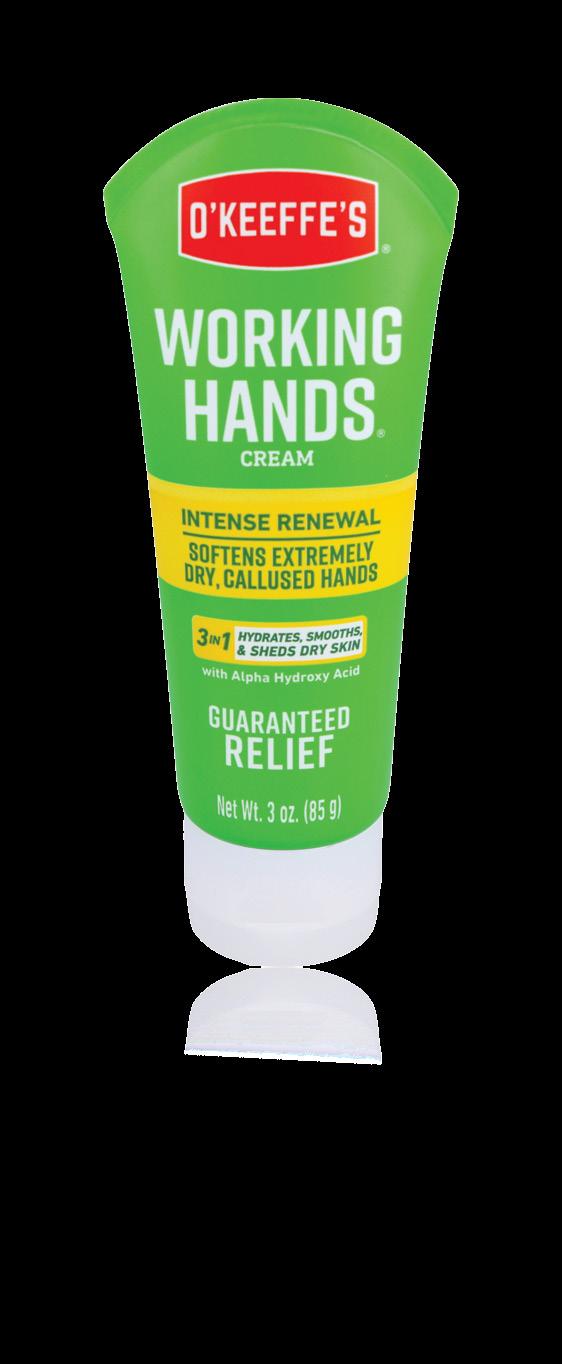
4
5
Product introductions remained strong in June versus the numbers seen in May, though the items manufacturers introduced remained unchanged. With all the volatility in the economy, this is essentially good news.
In June, suppliers introduced 205 new products, the same amount they released in May. Waukesha, Wis.-based HRG reviewed 27 products in the health category (compared with 12 in May), 125 items in the wellness sector (compared to 124 in May) and 53 products in the beauty aisle (compared to 69 in May) to see which ones stood out as Products to Watch:
1. MiraFAST Soft Chews Mixed Berry
Bayer Inc. said that MiraFAST Soft Chews are designed to provide fast and gentle constipation relief. The chews are formulated to work naturally in 30 minutes to six hours and contain magnesium hydroxide 1200 mg saline laxative and are cramp and stimulant free. One pack contains 30 chews.
2. Mucinex Rapid Clear Liquid Gels + Sinus Max Nasal Spray
Reckitt’s Mucinex Rapid Clear Liquid Gel Capsules + Sinus Max Nasal Spray are specially formulated with maximum strength ingredients, the company said. The capsules include acetaminophen to help relieve pain and headache, reduce fever and thin and loosen mucus. It contains oxymetazoline HCI 0.05% to relieve severe nasal congestion and lasts 12 hours. It’s available with 16 gels and .75-oz. spray.
3. CeraVe Intensive Moisturizing Cream
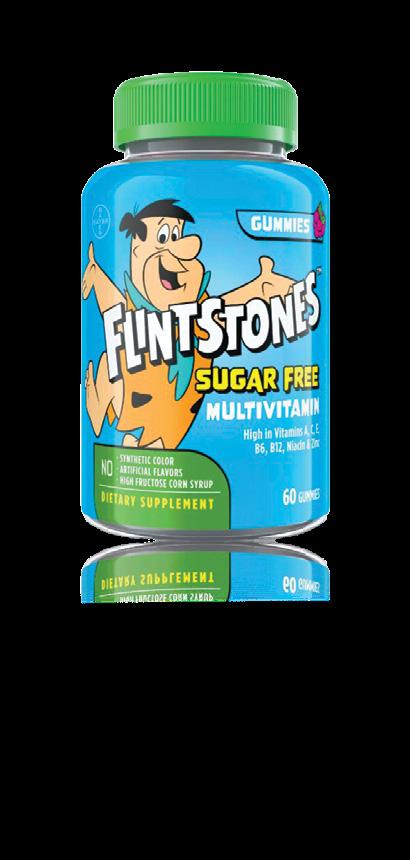
CeraVe’s Intensive Moisturizing Cream from L’Oreal provides for deep, continuous hydration of the skin barrier to relieve itching due to dryness. The cream contains three essential ceramides and 5% hydro-urea pH-balanced hydration boost to help restore the skin barrier. It’s designed to be fast absorbing and suitable for extra dry, itchy and mature skin. It comes in a 16-oz. bottle.
4. Working Hands Intense Renewal Cream
Working Hands Intense Renewal Cream is a 3-in-1 product that is formulated with alpha hydroxy acid and shea butter to exfoliate and accelerate the removal of dead skin cells from the skin. The cream also replaces lost moisture. The company said it is nongreasy, hypoallergenic and contains 48 hours of hydration in one use. It comes in a 3-oz. jar.
5. Flintstones Sugar Free Multivitamin Gummies, Raspberry
Bayer Inc.’s Flintstones Sugar Free Multivitamin Gummies provide 11 essential nutrients to support kids as they grow. The zero sugar, natural raspberry-flavored gummy is meant to be a rich source of vitamins A, C, E, B6, B12, niacin and zinc. It’s free of synthetic colors, artificial flavors and high fructose corn syrup. One pack contains 60 gummies. dsn

Emotional Support
Specialty
pharmacies that prioritize efficiency over empathy risk missing what matters most: meaningful connection
By Mark Gregory, RPh, and Katie Warmuth, PharmD, CSP
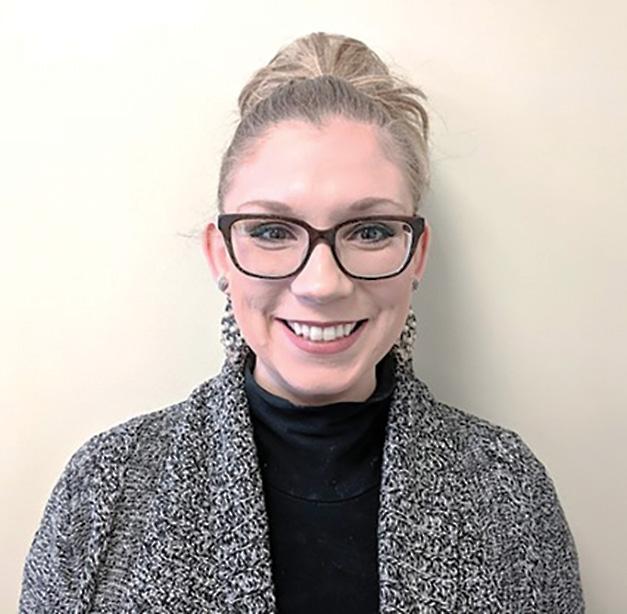
BKatie Warmuth, PharmD, RPh, CSP, is the director of specialty pharmacy at Gentry Health Services.
Mark Gregory, RPh, is the chief pharmacy officer at Pleio.
ehind every specialty medication is a person facing uncertainty. As this market surges toward unprecedented growth, specialty pharmacies are increasingly turning to automation to meet demand and manage costs. However, while efficiency metrics climb, something essential gets lost— the human experience. Specialty pharmacies that prioritize efficiency over empathy risk missing what matters most: meaningful connection during a critical moment in care. What if improving adherence didn’t start with technology, automation or cost reduction—but instead by addressing emotions?
Gentry Health Services and Pleio teamed up to measure the impact of a human-first support program that addresses emotional barriers for patients onboarding onto an immunology biologic.
In just six months, Gentry reported an 80% increase in total average fills, a 65% increase in patient volume and a 5% increase in the portion of days covered (also known as PDC) for patients in the immunology biologic GoodStart program. All of this through a program focused not on reminders or refill prompts but on human connection.
Pleio’s GoodStart Program is a peer-to-patient support model that engages patients from the moment their script is received. GoodStarters—specially trained peers—connect with patients to build knowledge, skills and confidence as they begin treatment with an immunology biologic.
Unlike traditional patient onboarding programs that prioritize automation, the GoodStart Program prioritizes trust and relational depth. Each conversation creates space for open dialogue that addresses not just how to take the medication but rather listens to the patient to help them build confidence in their new routines.
When Gentry Health Services embedded human-focused support into their specialty pharmacy workflow, the transformation went beyond metrics. By prioritizing emotional support first, they’ve cultivated something medication alone cannot provide—trust. This foundation of understanding creates space for patients to voice concerns they might otherwise keep

hidden. Vulnerable conversations emerge naturally, revealing specific counseling needs that traditional transaction-focused approaches miss entirely. Patients who feel truly seen and heard become active participants in their care journey rather than passive recipients of a service, creating a partnership that enhances both clinical outcomes and human dignity.
Developing this trusted connection upfront ensures that patients start and stay on therapy. With the support of GoodStarters, pharmacists and care teams now have more bandwidth to focus on complex clinical needs, while patients receive the kind of emotional reinforcement that’s often missing from specialty care.
Too often, nonadherence is framed purely as a behavioral issue. For patients starting specialty medications, the stakes are high, the regimens can be intimidating and the fear of what’s to come is very real.
What the Gentry-Pleio partnership highlights is that confidence is just as important as compliance. Helping patients feel supported by creating a judgment free environment opens them up to better understanding and awareness of their therapy. The data supports what many in the industry have long suspected but struggled to quantify: loneliness, anxiety and feeling overwhelmed are significant predictors of medication drop-off.
In fact, recent research conducted by Pleio confirms what the Gentry case study demonstrates in practice: loneliness is a critical but overlooked factor in medication adherence and overall health management. The recently published report: Loneliness and Health Behaviors: A Missing Link in Chronic Care based on a national survey of more than 2,000 Americans living with chronic conditions reveals the profound impact of isolation on patient care.
These findings reinforce that addressing the emotional and social aspects of care isn’t merely supportive—it’s essential to effective treatment. Because when patients feel heard, seen, and supported—not just managed—they engage more deeply in their care. dsn




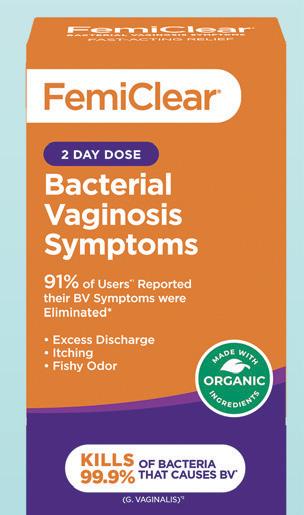

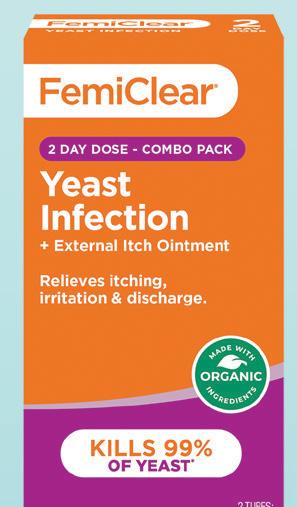



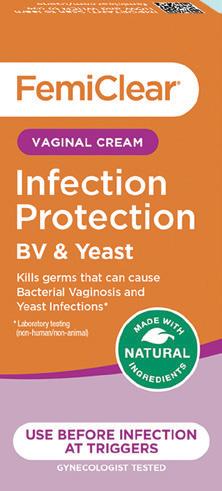

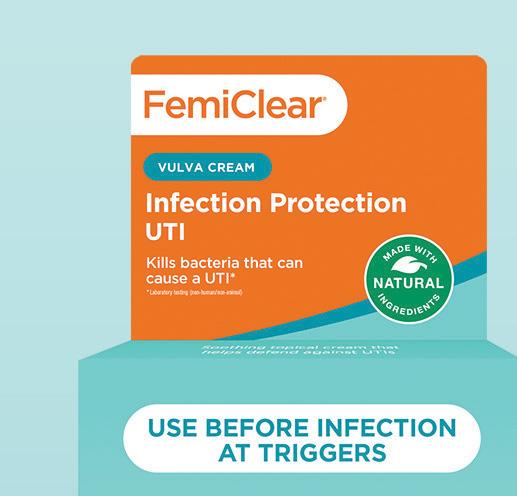




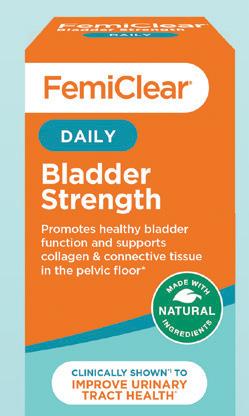



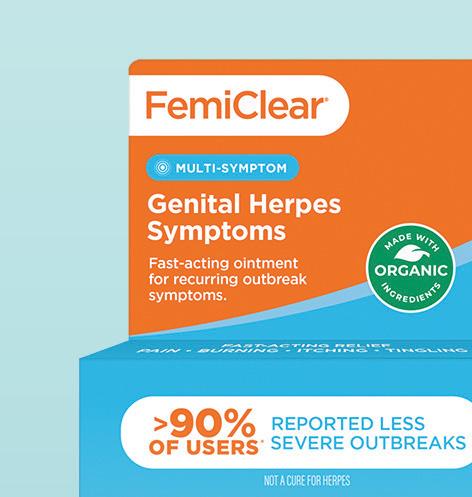



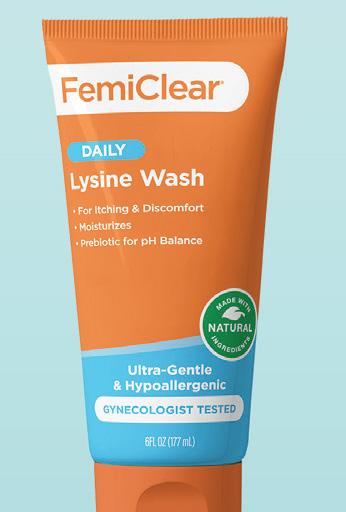



CRISIS BEHIND THE COUNTER
How independents and chains are working to prevent staff burnout and retain quality workers
By Taffel Sturgeon

The pharmacy business ain’t what it used to be. COVID-19 had something to do with that, but the pressures on profitability are many and growing. The Inflation Reduction Act capped the price of insulin at $35 a month, which is great for consumers but a hit to pharmacies selling insulin and inhalers. The reimbursement crisis is causing stores to consider not stocking namebrand drugs that invariably become loss leaders. Pharmacy school applications have plummeted 65% over the last decade partly because of waning interest in the profession, high educational cost, evolving job roles and perceptions of the industry’s future.
For those who remain, stress levels are rising to the point where you hear whispers of “burnout.”
This latest angle of “Pharmageddon” has stores casting about for ways to keep and retain the all-important pharmacists at a time of industry challenge.
Do business pressures percolate down to pharmacist job satisfaction? Is the bigger problem hiring support staff to help pharmacists? Can tech assuage some of the employee problems? How much can cash help? What about other initiatives beyond the almighty dollar that can smooth over ruffled feathers and lead to actual employee satisfaction—and with it, staff retention?
“Both chains and independents are feeling the strain,” said Drew Massey, director of pharmacy operations at Fruth Pharmacy, a regional chain that serves West Virginia and Ohio. “To be honest, with reimbursements and the current war on pharmacy, we are just trying to maintain access for patients at this point.”
The stress and strain are leading to initiatives to address mental health concerns among store staff. This is a different ballgame from a patient presenting with obvious colds or flu symptoms like a cough, sore throat or a snotty nose. It’s different from a staffer calling in sick. And how should store leaders differentiate between day-to-day stress and over-the-top burnout symptoms that might require outside help?
“Dealing with the public can be stressful,” said Kurt Proctor, Ph.D., R.Ph., senior vice president of strategic initiatives at the National Community Pharmacists Association. “A chain pharmacist may be dealing with stress from KPIs he’s expected to maintain, that’s one type of thing. If you’re independent, it’s your business, your life, your family, your legacy. How can you maintain profitability in a challenging environment? Are you going to be able to make payroll next week?”
The underappreciated burnout
The health of pharmacists themselves is broadly overlooked. Healthcare is usually about patients, not the caregivers. Mental health adds another layer because of the challenge with diagnosing it.
“Mental health has been underappreciated,” said Proctor. “It’s not been as much of a focus as other illnesses and conditions people are dealing with.”
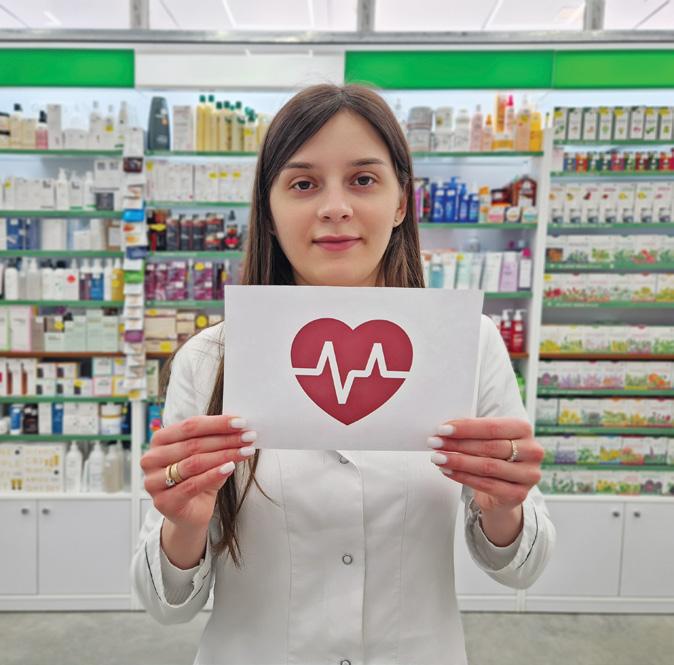
“Offering an expanded range of services can boost staff morale by enabling pharmacy teams to practice at the top of their license.”
— Lara Knudsen, Good Neighbor Pharmacy
That’s changing. Again, COVID played a role—a 2022 survey by researchers at the University of Illinois-Chicago revealed pharmacist burnout spiked from a crazy-high 40% to 50% level pre-pandemic to an astonishing nearly nine out of 10 by 2022.
Just last October, the NCPA Innovation Center began a partnership with Cardinal Health Foundation to provide funding and scholarships for pharmacists to attend mental health first aid training, as well as a series of webinars developed by the Innovation Center that pharmacists and their teams can attend live or on-demand.
“The training provides perspectives on how to help identify possible mental health concerns,” said Cherilyn Steele, director of communications at Cardinal Health. “They also help foster healthy conversations about such concerns, and emphasize the importance of listening and providing guidance and direction.”
To date, Steele said about 40 pharmacists have completed the mental health first aid training, and more than 200 pharmacists have participated in educational webinars. Salient titles include:
• “Stop the stigma: Effective communications with persons with serious and persistent mental illness in the pharmacy setting.”
• “Beyond burnout: Mastering self-care and stress resilience within your pharmacy team.”
• “Reclaim your mind: Strategies for improving mental fitness and well-being.”


“We know that pharmacists’ work continually evolves and is currently shaped by staffing shortages, reimbursement challenges and changing patient behaviors since the COVID-19 pandemic,” said Brad Cochran, Cardinal’s EVP, pharmaceutical and specialty distribution. “The mental health first aid training recognizes that shift and is designed to not only support patient care, but also inspire open, healthy conversations among healthcare teams.”
The idea behind strengthening mental fitness is to equip drug store teams with the tools for personal well-being and professional success. That might look like stress reduction techniques, improved decision-making and enhanced patient care strategies, and simple ways to reclaim a sense of control. Done well, such mental fitness initiatives can result in a resilient, well-supported team that can perform better in a public-facing, high-pressure environment.
Expanding your store’s mission
The dynamic nature of the pharmacy industry requires a continual evolution of service offerings. This shift is making business better for pharmacies. Along the way, it’s breathing new life into stores and store staff.
In a way, this shift is another side effect of COVID—providing more hands-on, patient-centered care that goes beyond just dispensing drugs. This might look like vaccines, of course, but also wellness screenings, diagnosis and prescribing for certain conditions like diabetes, even connecting patients into clinical trials.
Thrifty White Pharmacy, a chain of 88 pharmacies serving the upper Midwest from Minnesota to Montana, has remodeled more than three-quarters of its locations to include clinical suites, enabling pharmacists to provide services like immunizations, lab draws and medication therapy management (MTM). Pharmacists are now engaging more deeply in patient care, moving beyond traditional dispensing roles.
“On the clinical care side, we have been very focused on training, equipping, and identifying ways for our pharmacists to

provide more of these services,” said Jeremy Faulks, vice president-pharmacy at Thrifty White. “It definitely creates a better work environment for our teams. It enables them to perform more direct patient care activities. We also support our teams through technology and central fill, ensuring they have time for these items.”
Thrifty White’s custom-built PatientRicity platform is like an electronic health record system that manages patient data and improves medication adherence, with the bonus of easily expanding the scope of patient care services. Patients (and, ahem, store managers) appreciate this more holistic and expansive portfolio of treatment and support options.
Good Neighbor Pharmacy, a network of independently owned and operated pharmacies supported by Cencora, is joining the shift to a more broad-based drug store environment.
“Many pharmacies are broadening their scope to offer more holistic care options, such as wellness programs, immunizations and MTM,” said Lara Knudsen, VP of program operations at Good Neighbor Pharmacy. “Good Neighbor Pharmacy is committed to supporting this evolution by providing education around the benefits of implementing these services and navigating barriers to entry.”
The network is also investing in other related resources designed to empower pharmacies to implement and sustain clinical services effectively and efficiently, helping member pharmacies transform into true healthcare destinations.
“Offering an expanded range of services can boost staff morale by enabling pharmacy teams to practice at the top of their license,” said Knudsen. “With proper training and support, these expanded roles not only enhance the quality of care but also create a more fulfilling and rewarding work environment for pharmacy staff.”
It bears mentioning that Good Neighbor Pharmacy routinely ranks top in customer satisfaction. It was ranked No.1 in Customer Satisfaction with Chain Drug Store Pharmacies in the J.D. Power 2024 U.S. Pharmacy Study.
“It speaks to patients’ satisfaction with our member pharmacies’ level of service,” said Tim Weber, VP of pharmacy enablement and performance at Cencora, which is sponsor and owner of the Good Neighbor Pharmacy name. “It is important to note in general that community retail pharmacies operate with purpose, making them places people want to work.”
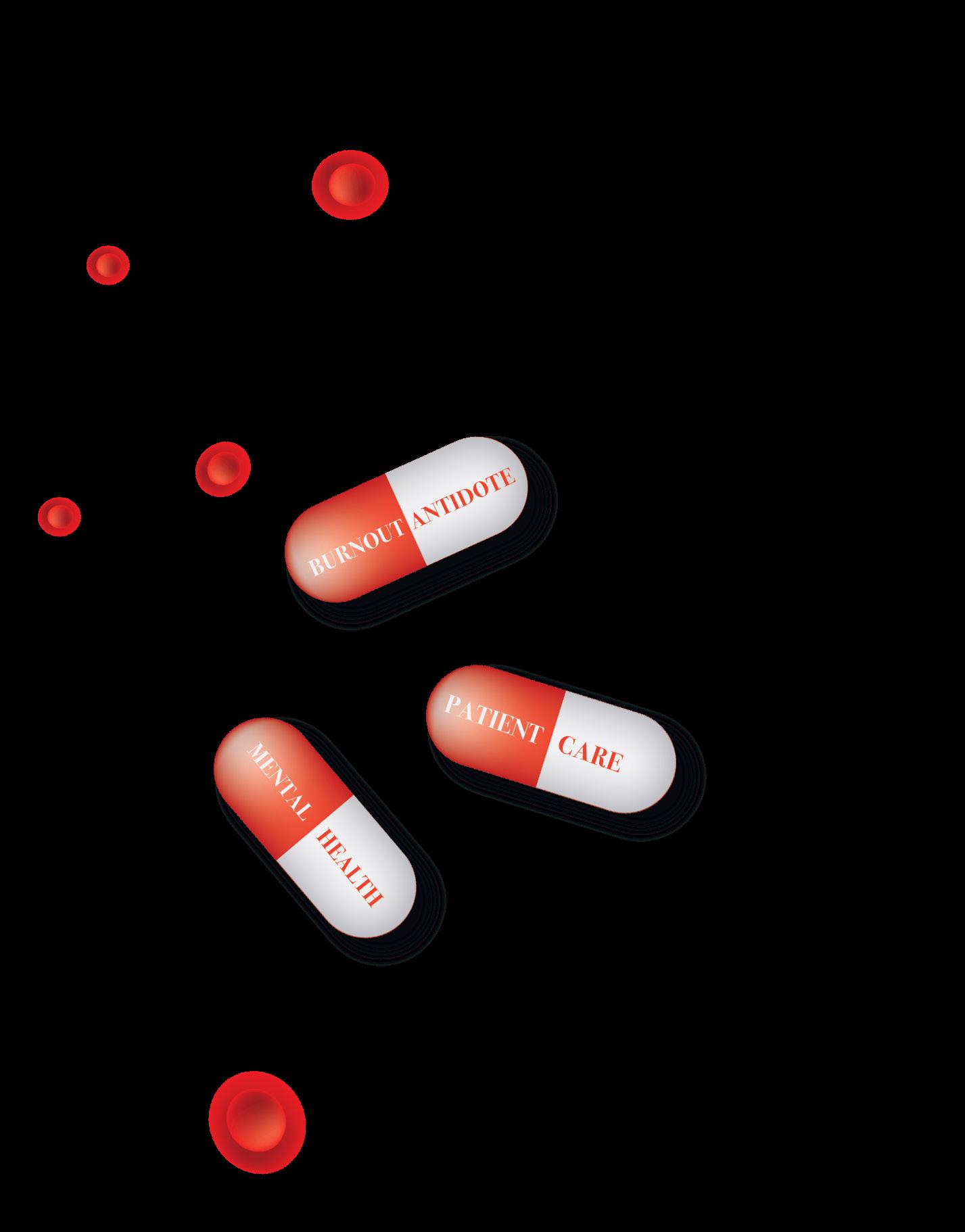
tentially more profitable).
For a major chain like Walgreens, one answer was cash. Since 2022, it has committed hundreds of millions of dollars for salary increases, bonuses and creating roles like pharmacy operations managers to alleviate administrative tasks off the backs of pharmacists.
In April 2025, the retailer introduced the PharmStart initiative, a program that covers the full cost of online prerequisite courses for current employees intent on heading to pharmacy school. This is a major retention pipeline play.
Thrifty White has employed a dozen strategies to increase both recruitment and retention, including enhanced partnerships with pharmacy schools, free continuing education, increased pharmacist scheduler support roles, leadership training and emerging leader programs.
“We have seen good results from the above,” said Faulks. “Our pharmacists appreciate the focus on clinical service delivery,
and the support in providing care to patients, versus just filling prescriptions all day.”
Fruth Pharmacy, “a store that can’t pay the premium salaries,” has nevertheless employed a number of strategies in the pursuit of engineering employee good will, Massey said Like Thrifty White, Fruth works with schools of pharmacy to get interns. It also leverages cross-team training and pitching in to help the global team effort. Then there’s things like CPR renewals, scholarships to employees and their dependents and a flexible vacation scheduling program. He said it’s always a challenge to hire support staff to ease the pharma-
For the majors like CVS, dynamic workload sharing across pharmacies shifts certain tasks to specialist stores. “This helps improve pharmacy workflow and workload, creating efficiency and capacity in stores for pharmacists to have more direct interactions with patients,” said Ethan Slavin, head of CSR media relations at CVS Health. “We’re proud to say that our pharmacist turnover rate is currently at a
Massey was keen to note that the most important facet of staff satisfaction—and this, no doubt, counts for any and all pharmacies—comes from good old-fashioned, P&L-free communication.
“I believe in holding a monthly town hall that is a no judgment zone to get ideas, correct issues and determine what is and is not working,” he said. “I also believe in a touch-base with the pharmacists at least once a quarter. Then, we have an allhands-on-deck meeting once a year.”
He said Fruth experiences only an average amount of staff turnover, “and none have been from what I would call disgruntled.”
Mental health, development programs, and role redefinition are no longer optional—they’re essential. The shifting paradigm of pharmacies is revealing a future that is not just about addressing burnout. It’s about building workplaces pharmacists and the staff want to be in. dsn
Supplement your store’s bottom line
To help drug store managers realize what their healthcare node can truly become, think of Amazon. It started out as an online bookstore. Then someone realized that their identity was really more of an online store. The rest is history.
For pharmacies, perhaps it’s time to identify not as a narrowly tailored pharmaceutical-dispensing operation but rather as a key patient and consumer entrance point in the larger American healthcare system. That might mean more than just offering drugs, diagnostics and OTCs. (And that means more than makeup and junk food.)
Former pharmacy owner David Foreman, R.Ph., was running a successful store outside Richmond, Va., filling 50 prescriptions per hour. He expanded even in the face of that “insane amount” of scripts.
“At one point my pharmacy was the No. 1 seller of glucose-monitoring devices nationwide,” said Foreman. “We also integrated natural products into the counseling by offering complementary solutions to help them eventually reduce dosing, which cuts down on cost and side effects. The supplement space improved quality of life and quality of care.”
Not for nothing, but supplements have outstanding margins.
Got statins? Recommend coenzyme Q10, which statins are known to deplete and cause muscle soreness. On Ozempic? Protein is a no-brainer because the weight lost is not only from fat but also lean body mass. Other supplements like creatine and HMB can support exercise performance and recovery, potentially helping to preserve muscle mass.
REX Awards 2025: Beauty
DSN’s Retail Excellence Awards recognize manufacturers for innovations in beauty
By Nora Caley


Beauty takes on many forms, and it also encompasses several growing categories. According to Circana, in 2024 mass market beauty sales experienced a year over year dollar increase of 3%. Fragrance was the fastest growing category in the channel, and hair and skin care segments also saw growth.
Innovation is a key to success in an industry where consumer trends change quickly. Here are the 2025 Retail Excellence Award winners in Beauty.
Beauty 21 Cosmetics
Founded in 1985, Beauty 21 Cosmetics offers a full spectrum of color cosmetics spanning eye, lip, face and nail. With a mission to make professional-level beauty approachable for all, the company’s flagship brands are L.A. Girl and L.A. Colors, and each year the company introduces 10 to 20 new products across both brands. Headquartered in Ontario, Calif., Beauty 21 has global distribution in more than 30 countries.
In 2024, Beauty 21 launched the On Cloud Nine Collection, a cream-to-powder formula inspired by consumer interest in hybrid textures that bridge the gap between skincare and makeup.
The company is launching PRO.Conceal HD Concealer 15-Year Anniversary, PRO.Prep Multitasking Primer SPF 30 and PRO. Setting Brightening Loose Powder. The company said the launches reflect Beauty 21’s continued investment in innovation, multifunctionality and accessible artistry.
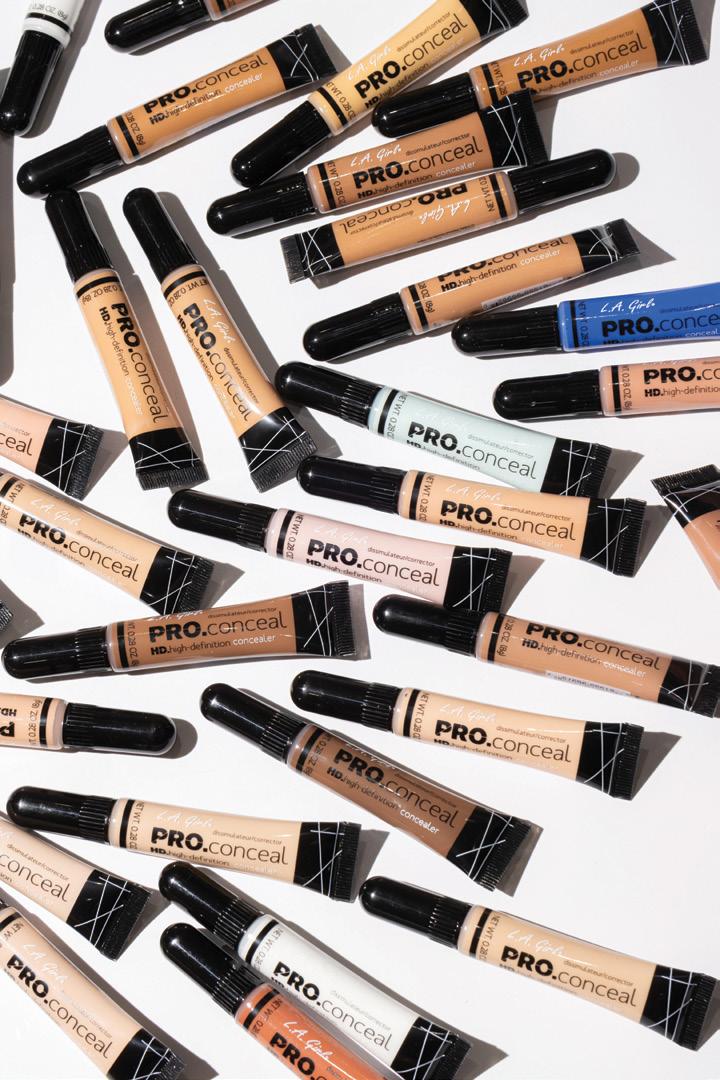

FOR HAIR AND FOR YOUR CHAIN’S BUSINESS.
Omega-rich hydration. Antioxidant protection. Rejuvenating care.
To tranform your bottom line, Obliphica Professional offers generous sampling, beautiful displays and comprehensive conmer media support
obliphica.com | 855-330-5530
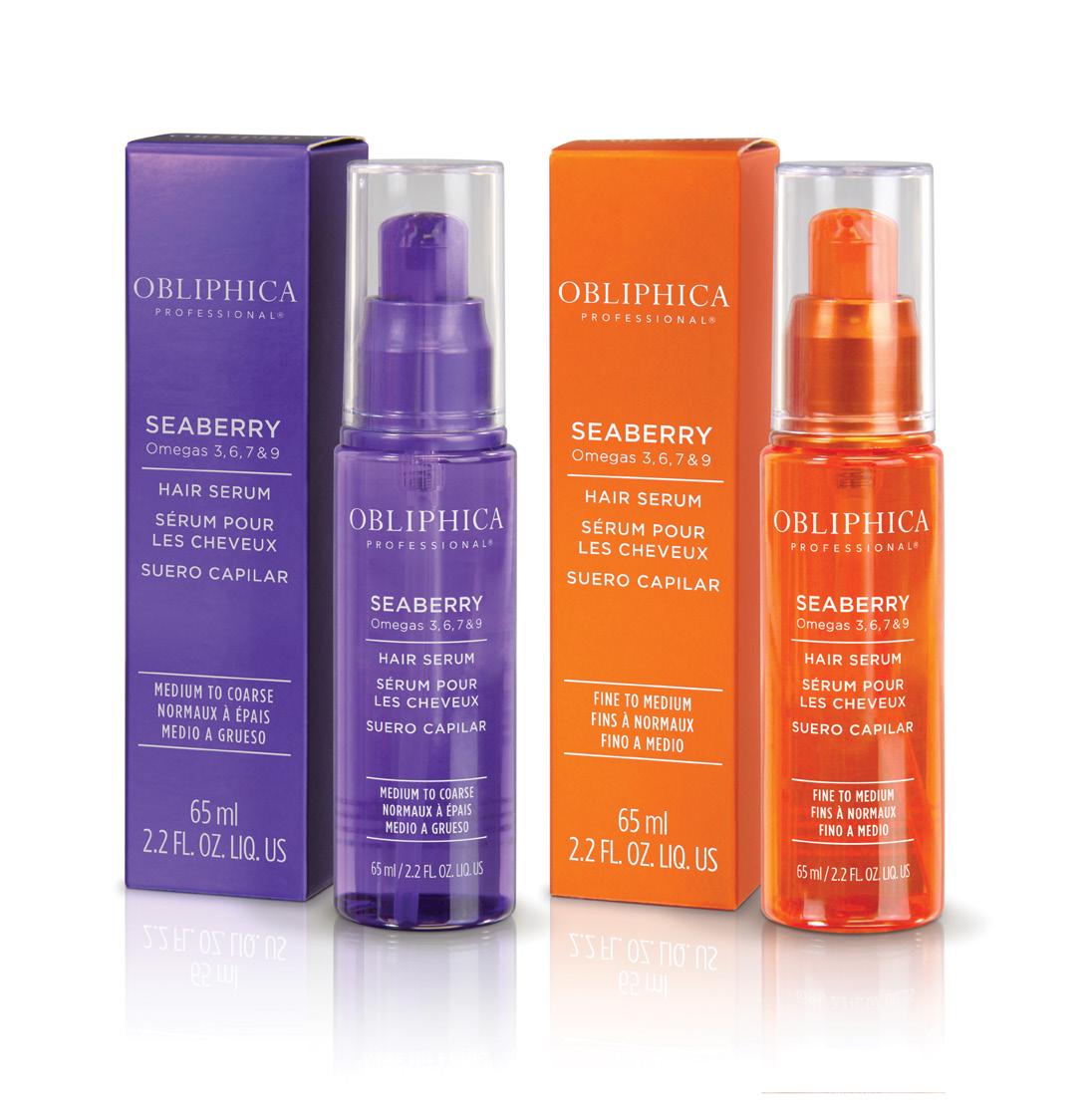
Milani Cosmetics
In 2024 Milani Cosmetics launched its “Face Set. Mind Set.” campaign, timed to coincide with major women’s sports events. The campaign focused on innovation and cultural relevance, and emphasized the connection between physical presentation and mental strength.
“We embraced a social-first, community-driven strategy and fostered a shared space for affirming mental and emotional wellness,” said Kelly Sobol, senior vice president of North America sales and customer development. “Milani’s 2024 innovation stood out not only for our bold marketing but also for our ability to seamlessly integrate empowerment, authenticity and product relevance.”
Milani Cosmetics offers primers, setting sprays, mascaras, lipsticks, concealers and other products for a multicultural customer base. This year the brand is responding to demand for skin-smoothing, blur-effect products with the Conceal + Perfect collection, which includes a primer, skin tint and powder. Milani also is showcasing its Make It Last Setting Spray, Highly Rated Mascara, Fruit Fetish Lip Oil, Color Fetish Lip Color and Baked Blush lines.
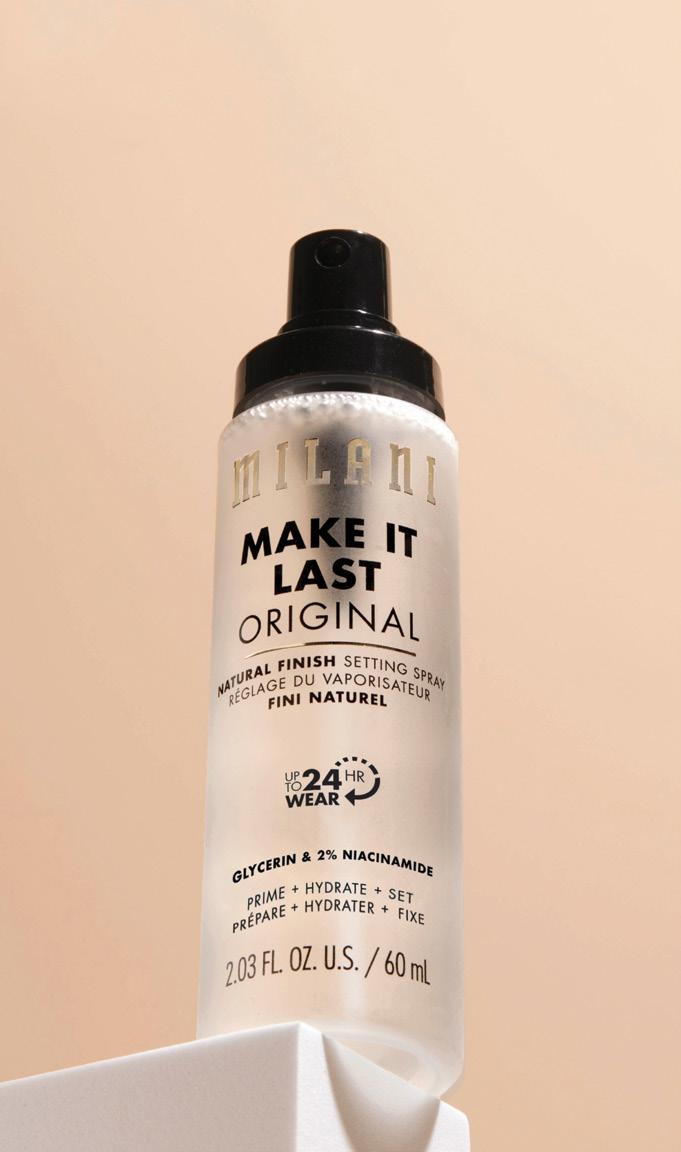
Obliphica Professional
Obliphica Professional has a portfolio of hair care products across three categories. Scalp and hair treatments feature seaberry oil, which contains antioxidants, omega fatty acids and other bioactive compounds. The San Antonio, Texas-based Obliphica combines this botanical ingredient with modern science to deliver scalp treatments that support long-term hair health, strength and shine.
In hot tools, Obliphica partnered with Enzo Milano to develop products such as the G6 and G6+ Flat Irons, SX Smart Comb and BX Hot Air Brush. The Enzo Milano Collection of professional hot tools are engineered for all hair textures, with customizable heat, material performance and user safety.
Solano Premium Blow Dryers are lightweight and work for all hair types, from fine to coily. The professional dryers have Italian engineering, quiet power and cuticle-sealing airflow, the company said.
“Our inspiration comes from our community—hairstylists, professionals and real-world consumers—and from a deep understanding of what it means to care for hair holistically, from scalp to strand,” said CEO Shalimar Dalal Maakar.
Okay Pure Naturals/Xtreme Beauty International
With a mission to provide everyday beauty care solutions using natural, globally inspired ingredients, Okay Pure Naturals, a brand of Xtreme Beauty International, offers a range of items. The products include hair care, skin care, bath and body, men’s grooming, baby care and wellness gummies.
In 2024, the Miami Gardens, Fla.-based company focused on ingredient-led innovation and category expansion into underserved segments of the beauty aisle. “Our innovation stems from a deep understanding of consumer gaps at retail, combined with input from our retail partners and a passion for culturally rooted natural care,” said Osman Mithavayani, co-founder and vice president.
Recent launches include the Turmeric Skin Care line, which offers natural brightening solutions and contains turmeric, an ingredient rooted in tradition and backed by modern skin care benefits. Also new is the Rosemary + Biotin Hair Care collection, which has clean ingredients and meets consumer interest for scalp care and hair density solutions and Men’s Curls & Styling Collection, a core growth area.
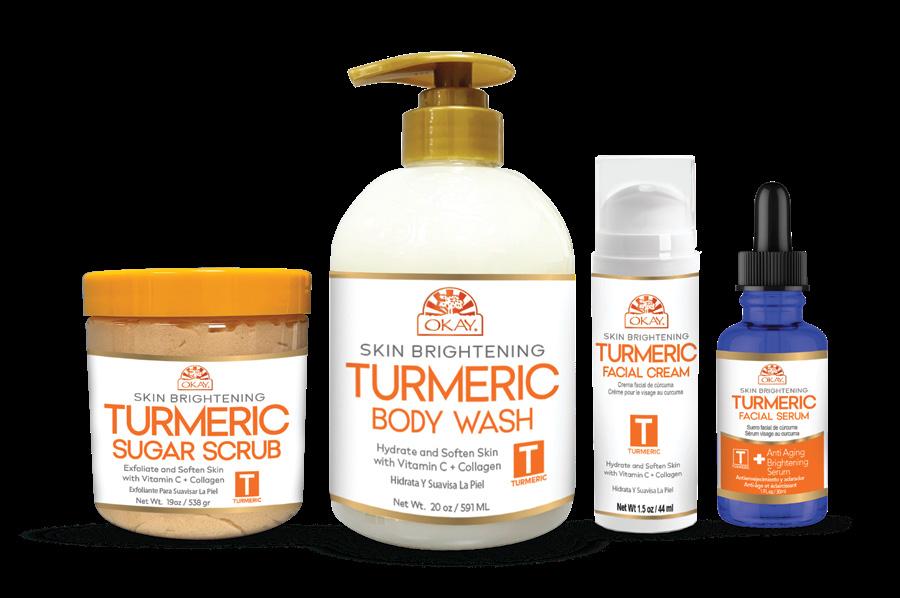



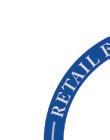
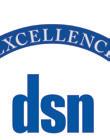




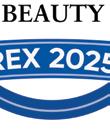

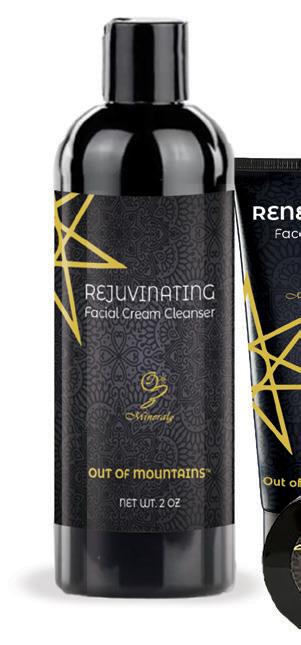
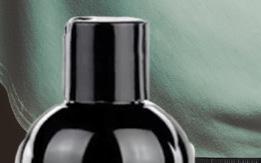
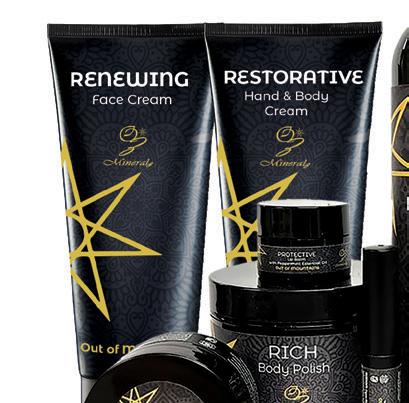
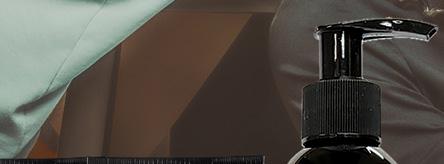

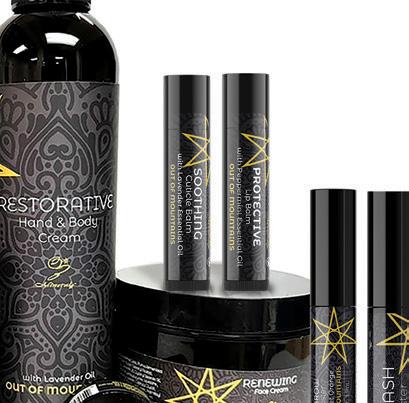


























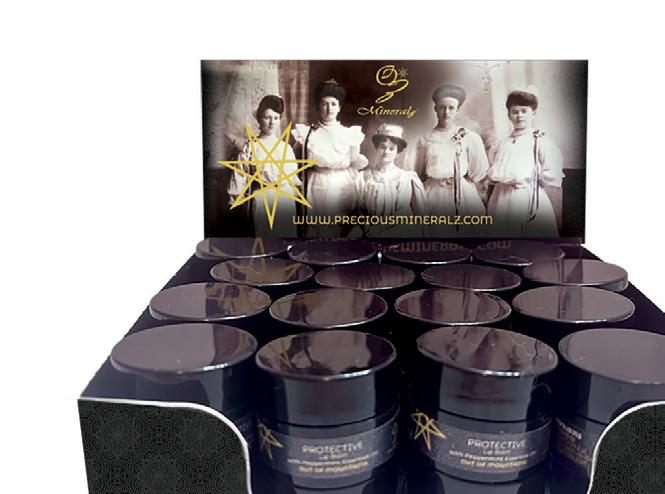



Pacific World
The owner of a range of beauty brands, Pacific World offers products across a variety of categories, including tools, hair, nail and skin care. The portfolio includes Dippity Do, a brand launched in 1965; Nails.Inc, gelLED and Nailene color and treatments for nails; Holler and Glow masks, bath bombs and skin care; and Trim and Gem beauty tools. Pacific World products are designed to make consumers’ lives easier. The new It’s Topless, under the Nails.Inc brand, is an allin-one basecoat, treatment, color and topcoat, to make changing nail color as easy as changing one’s lipstick, according to the company.
This year Nails.Inc is focusing on that new product and on gelLED, an at-home gel nail formula that cures with an LED lamp in two minutes and lasts up to two weeks. The company will also focus on Holler and Glow Body Sprays and on Dippity-Do Girls with Curls Light Hold Gelée, designed to shape, smooth and separate curls with natural aloe, vitamin E and wheat protein.
Precious Mineralz
The majority women-owned Precious Mineralz makes skin care products that contain halloysite, a nanotubular kaolin clay, as the delivery system for hyaluronic acid, peptides and other ingredients. The company mines and processes the clay from its own Northstar Mines in Eureka, Utah, where the company is headquartered. “To our knowledge, no other company utilizes halloysite nanotubes as a carrier in a delivery system that releases key ingredients deep into the skin,” said owner Deborah Dixon.
The Precious Mineralz Out Of Mountains brand skincare products include Rejuvenating Facial Cream Cleanser, Renewing Face Cream, Under Eye Correction Cream, Restorative Hand and Body Cream, Protective Lip Balm in a Tube, Soothing Cuticle Balm in a Tube, Eyelash Booster, Eyebrow Booster and Rich Body Polish. All products are vegan, cruelty free, formulated with clean ingredients and packed in recyclable containers.
In 2024 the company introduced travel-size products and tube containers, and this year it plans to launch a men’s skin care and grooming line that will incorporate halloysite.
Vitals International Group/Pura D’Or
Pura D’Or makes natural, plant-based products and uses customer feedback as inspiration for new formulations. An in-house R&D team uses evidence-based product development and blends science with nature. The brand’s portfolio includes personal care, hair care, skin care, bath and body and aromatherapy. The top seller is the Anti Hair Thinning systems, with three lines that target different stages. All Pura D’Or products are free of harsh chemicals with no parabens or sulfates and are hypo-allergenic, color safe and gluten-free.
In 2025, Pura D’Or is spotlighting its new therapeutic hair and skin care products. The formulas feature peptides, marine collagen and ingredients like castor oil and botanical extracts. dsn
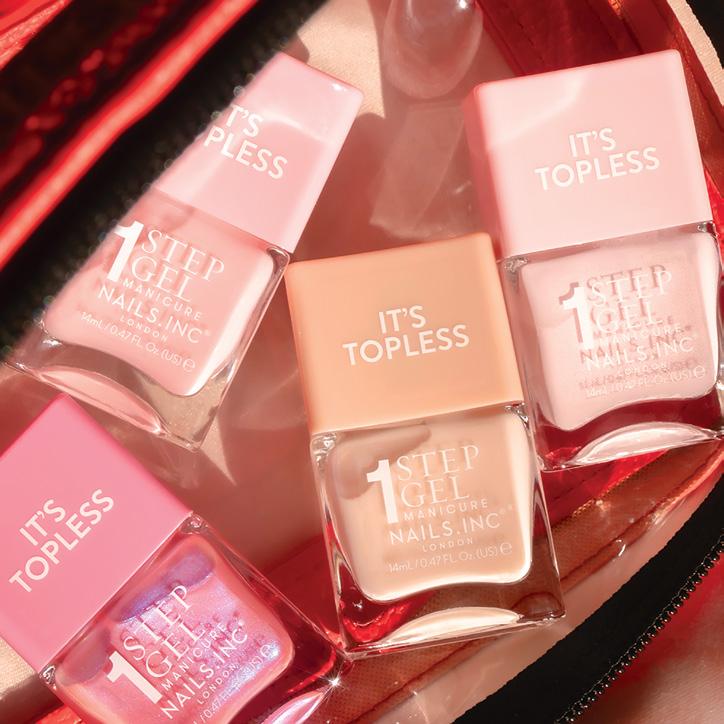
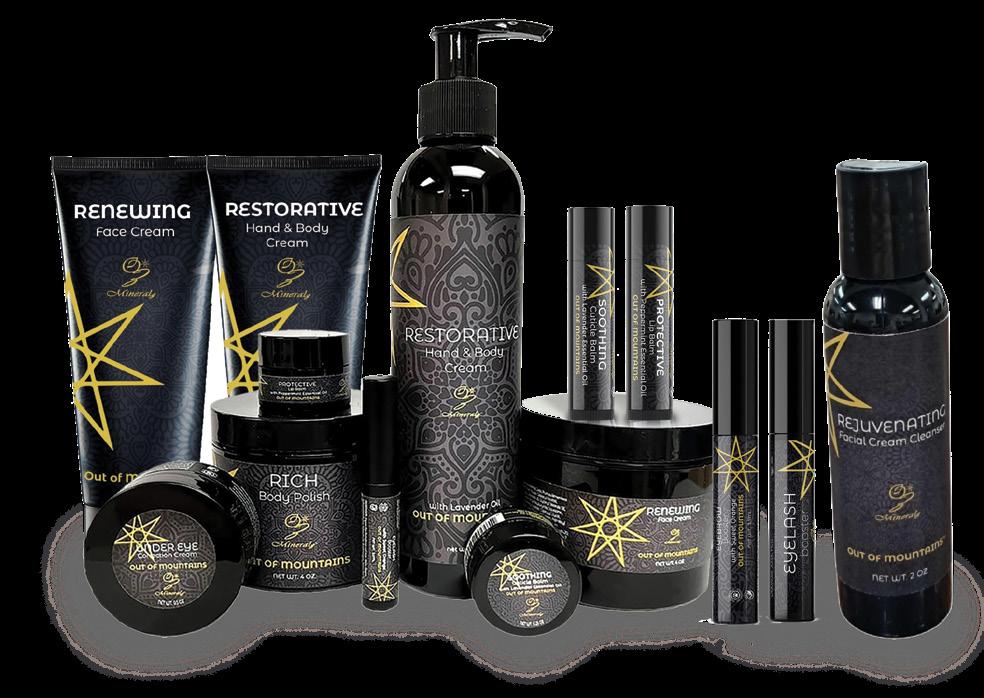
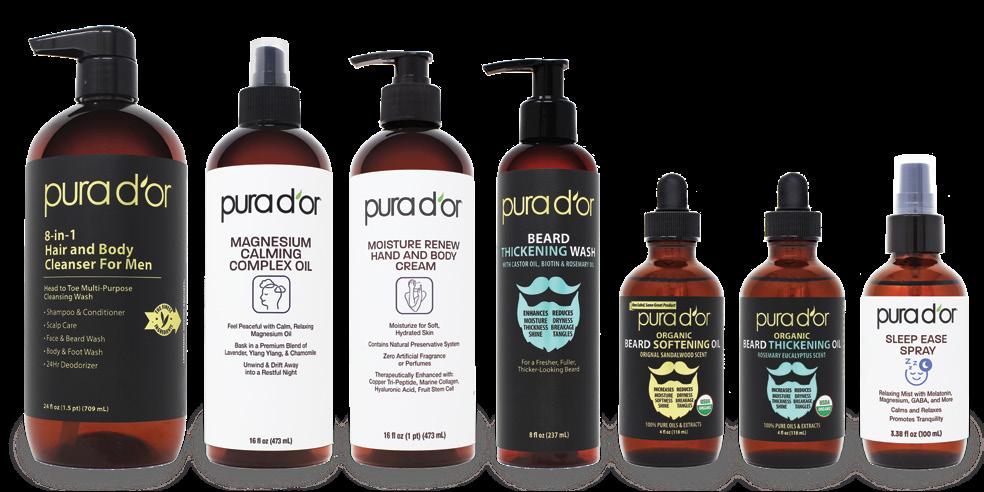


















Sun Times
The future of the sun care category is bright, thanks to innovations and educational campaigns

The spotlight is finally on sun care. Despite the importance of sun protection, sun care has been somewhat of an “adjacent” segment of skin care in many mass market doors. Assortments were only expanded during the summer season with a small smattering of brands.
New thinking is that mass retailers can position sun protection as an opportunity to support their wellness efforts. The goal isn’t only to sell more products but to help change the skin cancer statistics.
One in five Americans will develop skin cancer by the age of 70. More than two people die of skin cancer in the United States every hour, according to the Skin Cancer Foundation.
The category is getting prime and year-round space. Mass market sunscreen sales expanded 3% through April 2025 to $2.5 billion, according to Circana. The need to broaden the selection is paramount because prestige retailers also want to shore up their sun protection. While a much smaller wedge of market share, prestige retailers posted 8%.
Mass marketers got the message.
Target, for example, showcases as much as 12 linear feet in stores with brands ranging from legacy names like Coppertone to up-and-comers such as Vacation. There are also several offshelf displays of self-tanning products, including Tanologist and Bondi Sands.
Pharmacists are getting involved to share their knowledge of sun protection. At the Giant Company, for example, pharmacists tee up summer product suggestions with prescriptions.
From May to July, Walgreens went all in on a campaign called Sun Responsibly. Its beauty and wellness consultants helped reinforce the importance of sun protection, and there were coupons for various sunscreen products and weekly savings.
Sun Responsibly is a brand-agnostic public service campaign aimed at making a contribution to public health by improving habits to save lives. It was developed by the Dermatology and Retail Alliance, a group led by L’Oréal Dermatological Beauty to advance skin health through cross-industry collaboration.
“Together, we identified widespread barriers to consistent sun protection, ranging from misinformation to confusion about when and how to apply SPF,” said Gina Daley, assistant vice

Boost Sales with Sunscreen Smarts.
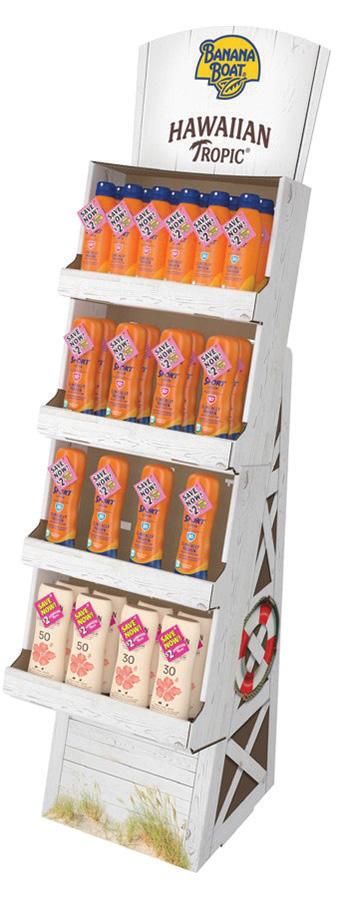
THAT MEANS IF... more consumers used the correct amount, 6 /10 SUNSCREEN USERS don’t reapply as recommended. $ IT WOULD EQUAL MM in category growth. 34
1%















Debunking the Myths
Renee Plato, MDSolarSciences’s CEO, dispels three common sun protection fallacies.
Myth 1
High SPF is all that matters.
In truth, SPF 50 blocks about 98% of UVB rays, and SPF 100 only slightly more. But SPF alone isn’t enough. Sunscreens must also offer broad-spectrum protection—guarding against both UVA and UVB rays—and be applied liberally and reapplied regularly to provide real protection.
Myth 2
You only need sunscreen when it’s sunny.
UVA rays—which contribute to skin aging and skin cancer— penetrate clouds and glass and are present every day, all year long. Protecting your skin isn’t just a summer activity—it’s a daily necessity.
Myth 3
Darker skin tones don’t need sunscreen.
While melanin offers some natural UV protection, it does not prevent hyperpigmentation, premature aging or skin cancer. In fact, skin cancers in people of color are often diagnosed at more advanced stages. Everyone, regardless of skin tone, benefits from consistent sun protection.
president integrated health at L’Oréal. “We then transformed the insights into clear, research-backed public service messages. We also partnered with The Skin Cancer Foundation to share trusted data, ensuring the campaign is rooted in facts.”
The campaign rolled out to retail stores and digital platforms with support from Ulta Beauty, CVS Health, Walgreens, HyVee and Meijer. L’Oréal also invited other brands to participate in the program. Young shoppers, in particular, are exposed to fallacies about sun protection, especially on social media. Hawaiian Tropic partnered with Alix Earle, one of the most influential social content creators, for a campaign called Tana Sutra. Earle, who has more than 7.5 million followers on TikTok and more than 3.1 million on Instagram, is credited with sparking sales of many mass market brands.
“This is a breakthrough moment for Hawaiian Tropic. ‘Tana Sutra’ is the largest creative campaign in the history of the brand,” said Veronique Mura, senior vice president and general manager at Edgewell Personal Care.
Starting good habits young is also tantamount to Edgewell’s Banana Boat brand, which just teamed up with Major League Baseball for a multi-year sponsorship agreement. A feature of the partnership is an engagement program called “Fun in the Field Rituals” which makes sun protection part of gameday traditions.
“Our core purpose is to make useful things joyful, and this partnership will do just that,” said Rod Little, president and CEO of Edgewell Personal Care.

Not to be left out of the sun, e.l.f. Skin plans to make Gen Z more SPF-aware with its new “Sunhinged” comedy special, hosted by Marie Faustin and featuring Andrea Jin, Jon Rudnitsky, Meghan Trainor and Heidi N’ Closet. It supports e.l.f.’s Suntouchable range.
Sun Bum is on the road this summer with its first “Trust the Bum” U.S. tour to spread sun awareness. Part of the effort is to engage younger consumers with light-

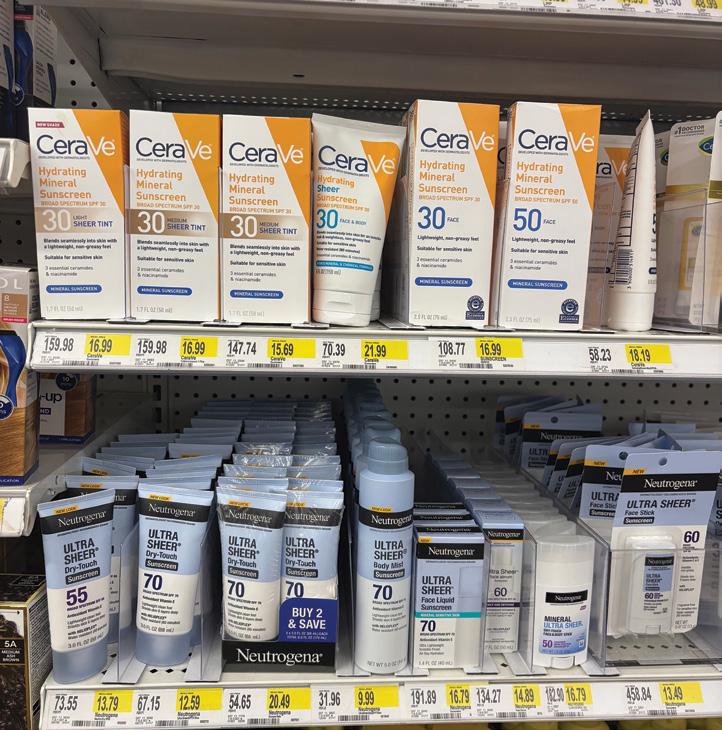
hearted yet education-driven messaging about sun care. Sum Bum linked up with social media stars, including Bretman Rock, Ana Stowell and Graydon Cutler, who share behind-the-scenes content and help drive excitement around the campaign.
New products are fueling sales and bringing options to store shelves. The skinifcation of sun care continues with new items loaded with good-for-skin ingredients.
CeraVe leverages expertise in skin care as it expands into sun. The brand has introduced its Hydrating Mineral Sunscreen Sheer Tint SPF 30, a 100% mineral sunscreen that reflects harmful UVA/UVB rays while providing all-day hydration. The formulations contain CeraVe’s three essential ceramides and are non-comedogenic so they won’t clog pores. La Roche-Posay recently expanded its assortment to include four flexible shades of its tinted mineral (SPF 40) sunscreen formulation. The company also launched Anthelios UV Pro Sport SPF 50, which provides high endurance, waterresistant sun protection and Anthelios UV Clear SPF 50 (with azelaic acid), which exfoliates and brightens the skin while fighting acne, per the brand.
Sol Labs’ Lumibronze SPF 30 is a mineral anti-aging bronzing serum that uses a 3-in-1 formula to merge mineral sun protection and anti-aging.
Men need sun protection, too, so Oars + Alps teamed up with Korchmar during Father’s Day for a men’s sun kit. It included the brand’s Go Stick Clear sunscreen. Target, Wegmans and Walmart are among the retailers stocking the brand. dsn

Navigating Choppy Waters
Despite headwinds, generic drug companies continue to implement innovative solutions to serve customers
Bu Sandra Levy

According to the Association for Accessible Medicine’s 2024 U.S. Generic and Biosimilar Medicines Savings Report, the use of Food and Drug Administration-approved generic and biosimilar medicines created $445 billion in savings in 2023 for patients and the U.S. healthcare system— and more than $3 trillion in savings the last 10 years. Savings from biosimilar medicines alone increased to $12.4 billion in 2023 and $36 billion since the first biosimilar entry in 2015.
While the savings to the healthcare system are good news, David Gaugh, former interim president and CEO of Association for Accessible Medicines, cautioned “that the long-term sustainability and success of these industries and the very health of our nation’s patients—hang in the balance.”
“We cannot afford to take our generic and biosimilar industries for granted.”
— David Gaugh, former interim president and CEO of Association for Accessible Medicines

If you are searching for a reliable supplier on top of all today’s important issues, look no further than Ascend Laboratories.

“Biosimilars are increasing patient access to care— 495 million more days of patient therapy have occurred because of biosimilar competition.”
— Craig Burton, former executive director of the Biosimilars Council
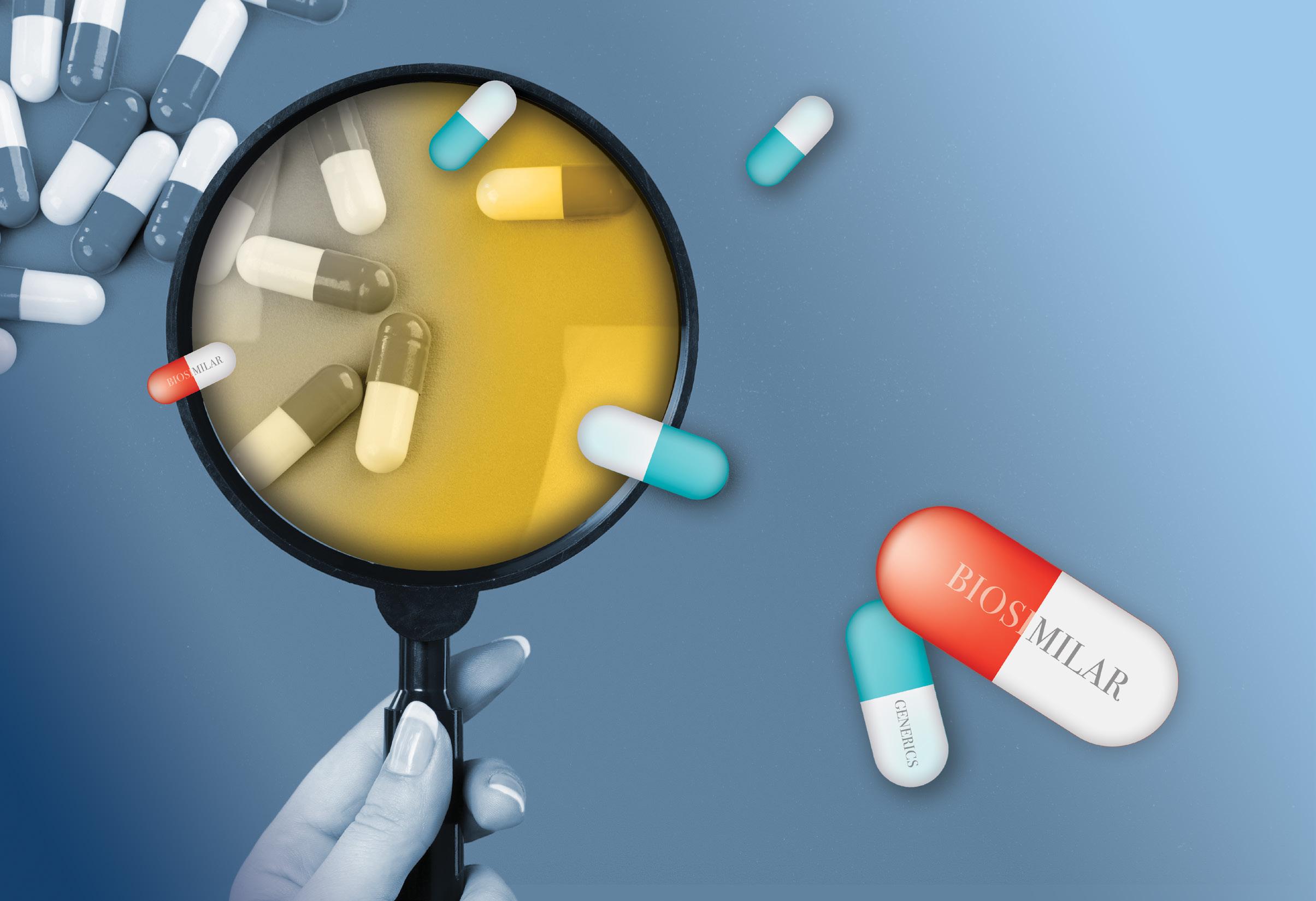
Gaugh added that the rate of drug shortages has increased as manufacturers face challenges, including rapid price deflation, supply chain challenges, Medicaid rebate policies that harm generic competition, slower adoption of new products due to abusive pharmacy benefit manager financial engineering and brand drug patent thickets.

no meaningful differences in clinical outcomes. Moreover, biosimilars are increasing patient access to care—495 million more days of patient therapy have occurred because of biosimilar competition,” Burton said.
“We cannot afford to take our generic and biosimilar industries for granted,” Gaugh said.
Craig Burton, former executive director of the Biosimilars Council, echoed Gaugh’s sentiments. Burton noted in the report that the biosimilars market continues to grow. In 2023, savings from the use of biosimilars increased by more than 30%, to $12.4 billion. Since their introduction, biosimilars have generated $36 billion in savings.
Despite these positive trends, Burton pointed out that the biosimilars market faces severe challenges to long-term sustainability.
“While a few biosimilar products show higher utilization rates, overall, biosimilars achieved only a third of the market versus brand biologics in 2023,” he said. “Last year we witnessed the PBM challenge facing new biosimilars, as biosimilar versions of best-selling biologic Humira combined to
made to develop a robust marketplace that supports multiple biosimilar competitors and avoids the “race to the bottom” pricing that has driven generic drug shortages.”
Indeed, while focusing on bringing new products to patients, generics companies are facing numerous obstacles. Yet, executives from several generic drug companies provide proof that by focusing on innovation, they can provide top notch service to their customers and patients.
Maintaining a consistent supply of product has become a thorn in the side of the industry and generics firms are going the extra mile to respond to this challenge.


Armas Pharmaceuticals
Joe Niemi, president and CEO of Armas Pharmaceuticals, said the company operates with a “patient first” philosophy, recognizing that every product it manufactures and ships is critical to someone’s health and well-being. “We are proud to maintain some of the highest service levels in the industry—because a back ordered product can’t help a patient in need,” Niemi said.
To ensure consistent supply, Armas Pharmaceuticals maintains higher inventory levels stateside and collaborates closely with customers on accurate forecasting.
“Given the challenges posed by market shortages, we collaborate closely with customers to ensure supply—and give priority to those who consistently support Armas products,” Niemi said.
Tony Rosa, senior vice president of retail generics at Amneal, acknowledged that a key challenge in the generics industry is the need to strengthen the U.S. drug supply chain through reliable, domestic manufacturing.
To that end, Amneal has one of the largest U.S. pharmaceutical manufacturing footprints in the industry, with approximately 2,500 employees—most of whom are focused on operations, quality and research and development, Rosa noted. The company’s recent collaboration with ApiJect Systems marks a significant step in expanding Amneal’s U.S. footprint with advanced sterile pharmaceutical capabilities. At its Brookhaven, N.Y., facility,
where the company employs around 800 people, this project is expected to create approximately 200 jobs. By integrating BlowFill-Seal technology with the company’s sterile manufacturing expertise, Amneal is enhancing the flexibility, scalability and resilience of critical drug production.
“This effort reflects Amneal’s long-term commitment to producing essential and affordable medicines in America, for Americans. As the United States looks to onshore more pharmaceutical manufacturing, Amneal is proud to be leading the charge in building a stronger, more secure domestic supply chain,” Rosa said.

Aurobindo Pharma
Paul McMahon, president, oral solids division, APUSA, Aurobindo, said, “In order to keep pace with demand and continue to set itself apart, it is critical for Aurobindo to have highly competitive costs and product availability while holding to the best-in-class standards of compliance and quality. Aurobindo remains focused on strengthening our existing businesses and developing a differentiated and specialty-driven product portfolio.”
Improved Tolerability
Levothyroxine Sodium Capsules may be better tolerated and have fewer absorption issues in patients with hypothyroidism.
Unique gel-cap formulation with only 4 ingredients
Reduced Excipients




Unlike other Generic Levothyroxine Tablets, YARAL’s Levothyroxine Sodium Capsules do not contain excipients that may interfere with absorption or tolerability.1,2
Twelve Dosage Strengths Available
13 mcg green
25 mcg orange
50 mcg white
75 mcg purple
88 mcg olive
100 mcg yellow
112 mcg rose
125 mcg brown
137 mcg turquoise
150
175




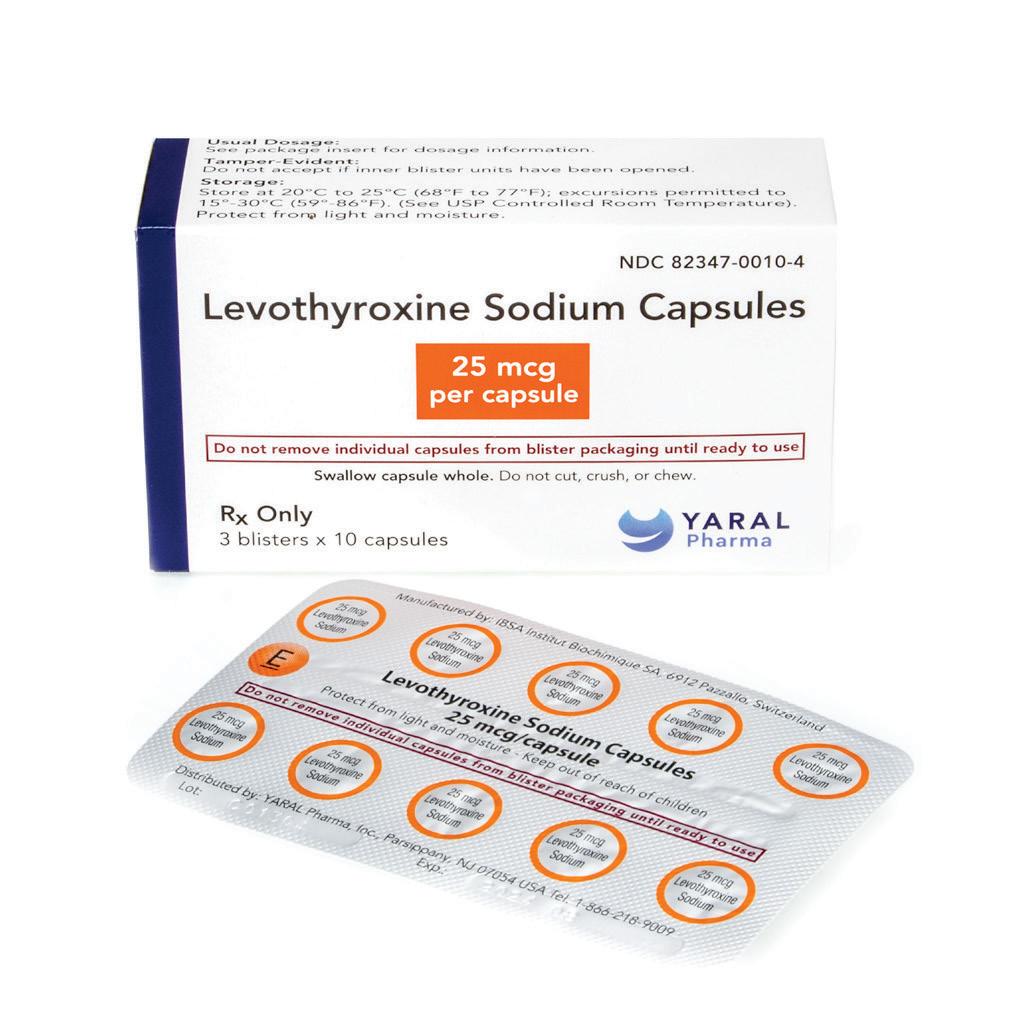
82347-0005-4
82347-0010-4
82347-0015-4
82347-0020-4
82347-0025-4
82347-0030-4
82347-0035-4
82347-0040-4
82347-0045-4
82347-0050-4
82347-0055-4 200
Box of 30 capsules; consisting of 3 blisters with 10 capsules each 30 days of therapy per box
82347-0060-4
See reverse side for Important Safety Information, including Boxed Warning.
Levothyroxine Sodium Capsules
IMPORTANT SAFETY INFORMATION
WARNING: NOT FOR THE TREATMENT OF OBESITY OR FOR WEIGHT LOSS
• Thyroid hormones, including Levothyroxine Sodium Capsules, either alone or with other therapeutic agents, should not be used for the treatment of obesity or for weight loss.
• In euthyroid patients, doses within the range of daily hormonal requirements are ineffective for weight reduction.
• Larger doses may produce serious or even life-threatening manifestations of toxicity, particularly when given in association with sympathomimetic amines such as those used for their anorectic effects.
INDICATIONS AND USAGE
Hypothyroidism primary (thyroidal). Secondary Levothyroxine Sodium Capsules is indicated as a replacement therapy in adults and pediatric patients 6 years and older with (pituitary), and tertiary (hypothalamic) congenital or acquired hypothyroidism.
Pituitary Thyrotropin (Thyroid-Stimulating Hormone, TSH) Suppression Levothyroxine Sodium Capsules is indicated as an adjunct to surgery and radioiodine therapy in the management of adults and pediatric patients 6 years and older with thyrotropin-dependent welldifferentiated thyroid cancer.
CONTRAINDICATIONS
• Uncorrected adrenal insufficiency
WARNINGS AND PRECAUTIONS
• Cardiac adverse reactions in the elderly and in patients with underlying cardiovascular disease. Initiate Levothyroxine Sodium Capsules, at less than the full replacement dose because of the increased risk of cardiac adverse reactions, including atrial fibrillation.
• Myxedema coma: Do not use oral thyroid hormone drug products to treat myxedema coma.
• Acute adrenal crisis in patients with concomitant adrenal insufficiency: Treat with replacement glucocorticoids prior to initiation of Levothyroxine Sodium Capsules, treatment.
• Prevention of hyperthyroidism or incomplete treatment of hypothyroidism: Proper dose titration and careful monitoring is critical to prevent the persistence of hypothyroidism or the development of hyperthyroidism.
• Worsening of diabetic control: Therapy in patients with diabetes mellitus may worsen glycemic control and result in increased antidiabetic agent or insulin requirements. Carefully monitor glycemic control after starting, changing, or discontinuing thyroid hormone therapy.
• Decreased bone mineral density associated with thyroid hormone over-replacement. Over-replacement can increase bone reabsorption and decrease bone mineral density. Give the lowest effective dose.
• Use for the suppression of nontoxic diffuse goiter or nodular thyroid disease: Use is not recommended in iodine-insufficient patients.
LIMITATIONS OF USE
• Not indicated for suppression of benign thyroid nodules and nontoxic diffuse goiter in iodine-sufficient patients,
• Not indicated for treatment of transient hypothyroidism during the recovery phase of subacute thyroiditis.
ADVERSE REACTIONS
Common adverse reactions with levothyroxine therapy are primarily those of hypothyroidism due to therapeutic overdosage. They include the following:
• General: fatigue, increased appetite, weight loss, heat intolerance, fever, excessive sweating
• Central Nervous System: headache, hyperactivity, nervousness, anxiety, irritability, emotional lability, insomnia
• Musculoskeletal: tremors, muscle weakness
• Cardiovascular: palpitations, tachycardia, arrythmias, increased pulse and blood pressure, heart failure, angina, myocardial infarction, cardiac arrest
• Respiratory: dyspnea
• Gastrointestinal (GI): diarrhea, vomiting, abdominal cramps, elevations in liver function tests
• Dermatologic: hair loss, flushing
• Endocrine: decreased bone mineral density
• Reproductive: menstrual irregularities, impaired fertility
ADVERSE REACTIONS IN CHILDREN
Pseudotumor cerebri and slipped capital femoral epiphysis have been reported in children receiving levothyroxine therapy. Overtreatment may result in craniosynostosis in infants and premature closure of the epiphyses in children with resultant compromised adult height. Seizures have been reported rarely with the institution of levothyroxine therapy.
HYPERSENSITIVITY REACTIONS
Hypersensitivity reactions to inactive ingredients (in this product or other levothyroxine products) have occurred in patients treated with thyroid hormone products. These include urticaria, pruritis, skin rash, flushing, angioedema, various GI symptoms (abdominal pain, nausea, vomiting and diarrhea), fever, arthralgia, serum sickness and wheezing. Hypersensitivity to levothyroxine itself is not known to occur.
For Full Prescribing Information, including Boxed Warning, visit www.yaralpharma.com/levothyroxine-pi.
To report SUSPECTED ADVERSE REACTIONS, contact YARAL Pharma Inc. at 866-218-9009 or FDA at 1-800-FDA-1088 or www.fda.gov/medwatch.

In fiscal year 2025, Aurobindo received final approvals for 31 Abbreviated New Drug Applications, McMahon said. The company also launched 36 products.
“Aurobindo Pharma looks forward to launching many more products in the coming months, as the company continues to expand its portfolio with over 130 pending approvals. This brings us to over 830 Food and Drug Administrationapproved ANDAs to date,” McMahon said.
In order to manage its sustained growth, Aurobindo is building a 170,000-squarefoot warehouse. This project represents Aurobindo’s third facility on their East Windsor campus.
“The facility is built to support longterm innovation and growth, from energy-efficient systems to future-ready infrastructure,” McMahon said, adding that “the company continues to stay on a
sustainable path to deliver billions of doses of medicine every month to its customers and patients in the United States and over 150 countries around the globe.”

Dr. Reddy’s Laboratories
Beyond ensuring drug supply, providing excellent service to customers and enhancing patient care in the face of challenges is the hallmark of a successful generic drug company.
Tracy Lopez, head of customer service and 3PL operations at Dr. Reddy’s Laboratories, said that to best serve its customers, Dr. Reddy’s aims to design its processes around enhancing the customer experience.
“We constantly consider how to make it easier for our customers to do business
with us. For our direct customer base, our customer care department is organized to provide dedicated account management,” Lopez said. “This means customers are assigned representatives within our customer care team who focus on building strong relationships with our customers. They take pride in understanding our customers’ needs, including their business, processes and portals, to facilitate smoother interactions with Dr. Reddy’s.”
Lopez claimed Dr. Reddy’s commitment extends beyond direct customer support. It is also highly focused on enhancing the patient experience.
To that end, the company offers patient portals and ensures that its website is regularly updated with tutorials and medication information to support patients and keep them well-informed. dsn
Sweet Spot
Retail pharmacies could ramp up educational programs, rethink merchandising efforts and address product frustrations to make shopping easier for diabetics
By Kathie Canning
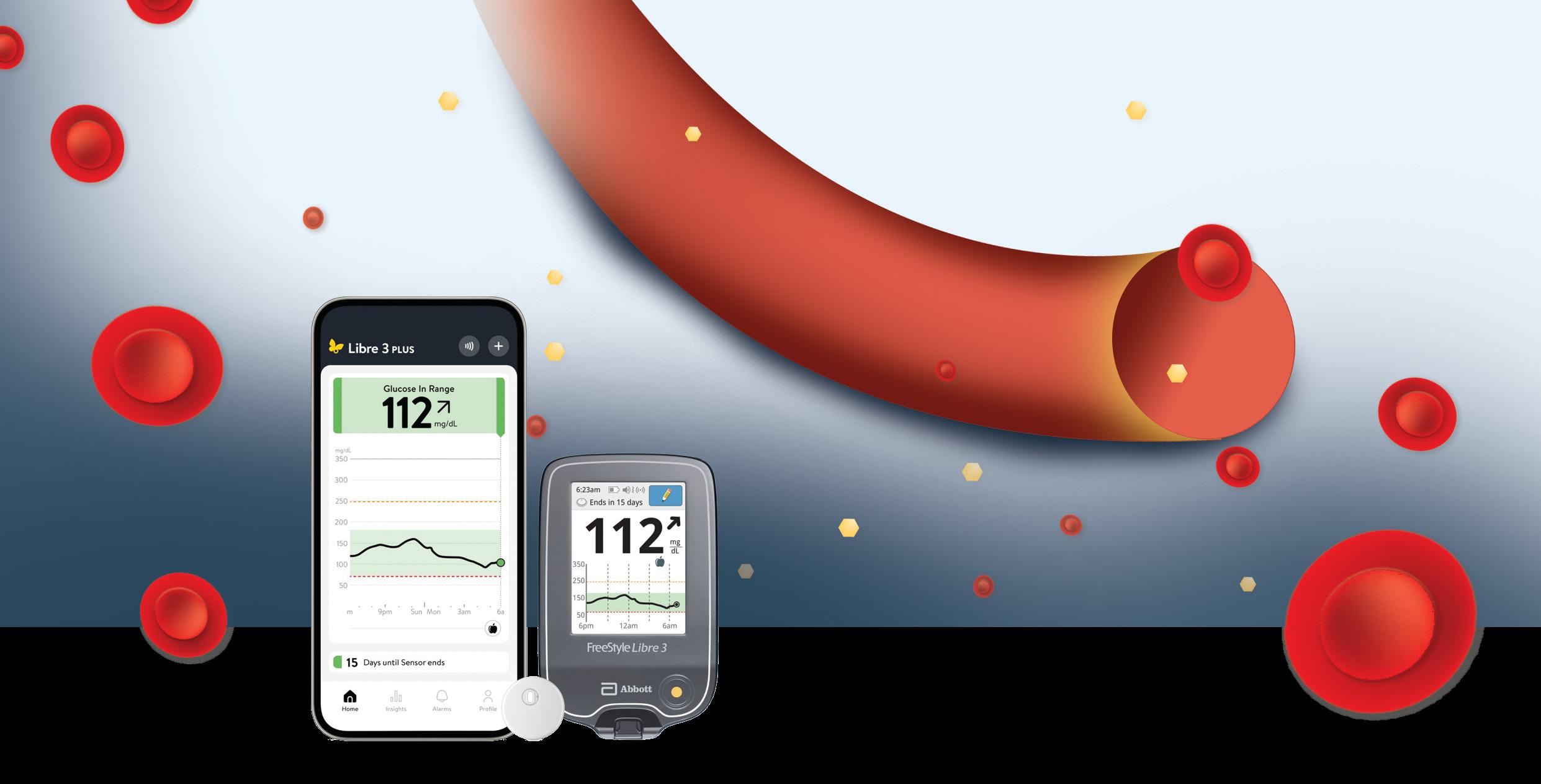
People with diabetes, whether type 1 or type 2, often face significant challenges in controlling their disease. Adhering to a diabetes-friendly diet, for example, can be a real struggle.
But shopping for diabetes-care products doesn’t necessarily have to be among those challenges. Pharmacies could take a number of steps to improve the shopping experience.
Focus on education
One such step could be a ramp-up of education centered on diabetes-care products—and diabetes care overall—for pharmacy personnel and consumers. And diabetes-care vendors present much potential as valuable resources here.
Brandon Faber, director of sales for Littleton, Colo.-based Allison Medical Inc., noted that his company educates pharmacies in a simple manner. The company first sends out educational communications electronically and then follows up in person to inform the pharmacy about the manufacturing process, quality and profitability of its products.
“Poor injection technique is associated with unpredictable glycemic outcomes, pain and

Nathan Patton, vice president of marketing, near patient care for Indianapolis-based Roche Diagnostics, said his company believes in “the transformative power of collective impact,” partnering with the American Diabetes Association and other organizations to support educational initiatives.
“We collaborate with retailers to emphasize the importance of testing and encourage them to do so, while also reminding pharmacies of the opportunity to improve patient adherence,” Patton said. “Roche’s terminal program focuses on adherence and
prescription refills. It includes messaging for customers whose prescriptions have lapsed, highlighting the significance of testing.”
Pharmacies also have an educational opportunity tied to insulin injection technique, as many people with diabetes have not received proper training—or too much time has elapsed since they were initially taught, said Hiliary Johnson, senior director, U.S. and global marketing for Parsippany, N.J.-based Embecta. “Poor injection technique is associated with unpredictable glycemic outcomes, pain and skin complications.”
Embecta developed educational resources (for both pharmacies and consumers) detailing proper injection technique, the importance of using a new needle for every injection and more, Johnson said. In addition, the company works closely with pharmacies to help them leverage those resources.
For its part, Excelsior, Minn.-based UltiMed Inc. developed an instructional video to show consumers how to properly use its UltiGuard Safe Pack pen needles.
According to Sarah Hanssen, vice president of sales and marketing, the video takes users step-by-step from dispensing to disposal.
Via vendor partnerships, pharmacies could also co-develop simple in-store signage, brochures and shelf talkers that not only are visually engaging, but also spell out usage techniques, product differences and self-management pointers, said Patricia Gaillard, marketing director,
“Efforts should help patients build confidence using devices, interpreting data and being accountable to make long-term changes to their health.”
—
Adam Nadler, CEO and co-founder of Quest Health Solutions

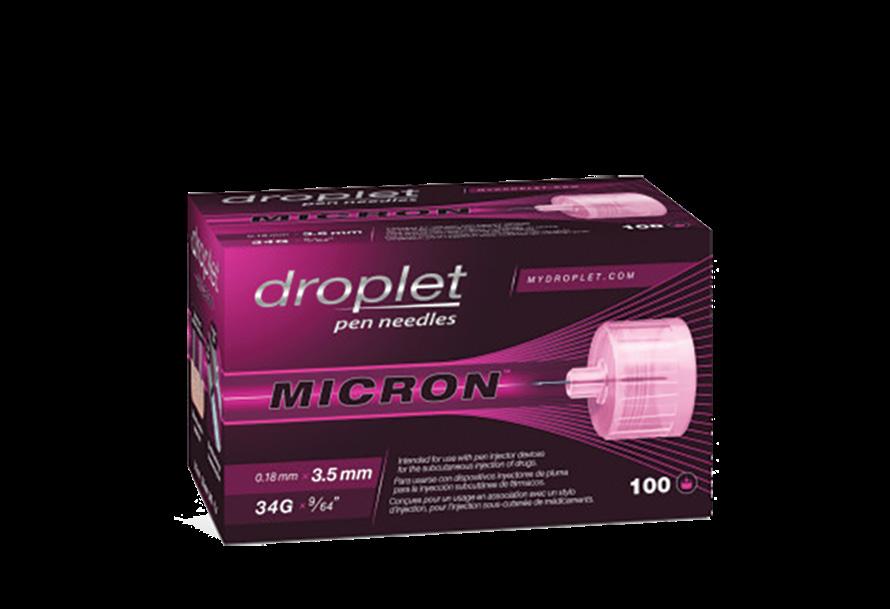
diabetes care for HTL-Strefa Inc., part of Woodstock, Ga.-based MTD Group.
“On digital platforms, vendors can contribute sharable content such as short videos, infographics and FAQs to be integrated into the retailer’s website, app or social channels,” she noted, adding that her company supports retail pharmacies with digital and physical assets. “Education should focus not only on product selection, but also on building confidence in managing a chronic condition.”
Pharmacies also could go beyond productuse information to offer lifestyle-focused education such as digital newsletters with recipes, updates on continuous glucose monitoring, coaching tips centered on nutrition, glucose patterns and exercise, said Adam Nadler, CEO and co-founder of Quest Health Solutions, Coral Springs, Fla.
“Efforts should help patients build confidence using devices, interpreting data and being accountable to make long-term changes to their health,” he added. “Too many patients rely on traditional methods; digital tools must meet them where they are.”
Pharmacies could add targeted product sampling to the educational mix, too, suggested Ethan Melillo, PharmD, senior manager of integrated health for L’Oreal Dermatological Beauty, New York. The
company offers the CeraVe brand covering diabetic skincare and more.
“Consider offering ‘starter kits’ containing product samples, informational brochures and discount coupons,” he said. “This comprehensive approach can improve product adoption rates and empower consumers to make informed decisions about their diabetes management. Partnerships with diabetes patient advocacy groups can further enhance the reach and impact of these initiatives.”
Enhancing merchandising efforts
Pharmacies could also ease the shopping experience for diabetic consumers by addressing merchandising challenges. One such challenge is the fragmented placement of over-the-counter diabetes-care items.
For example, skincare products for people with diabetes often are merchandised separately from other diabetes-care items.
“The dispersal of these items across various sections creates a significant barrier for consumers seeking to efficiently locate all their necessary supplies,” Melillo explained. He recommends that pharmacies put together a dedicated diabetes-care aisle with clear and prominent signage, distinct aisle markers and even concise brochures/pamphlets.
Pharmacies might benefit, too, by
Droplet Micron HTL-Strefa Inc.

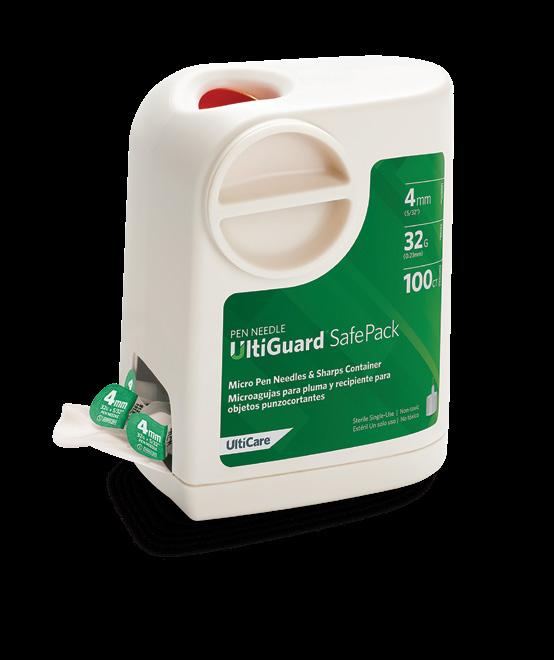




organizing and labeling diabetes-care products by function, instead of calling out aisle sections with terms such as “diabetic supplies,” Gaillard said. Terms such as “blood sugar monitoring” and “injection comfort,” for example, could reduce the stigma tied to diabetes.
Patton agreed that organizing by function makes sense and could help prevent shoppers from becoming overwhelmed by options. He also stressed that maintaining a sufficient stock of OTC and prescription diabetes-care products is critical.
To direct shoppers to certain diabetescare products offered only behind the counter, pharmacies could place “Please See Pharmacist” in the OTC section, Faber added.
Another roadblock for diabetes-care shoppers is that many items are typically kept behind the pharmacy counter, Hanssen pointed out.
“Making pen needles available in the front-of-store OTC sections, where regulations allow, can streamline the shopping experience and ease the burden on pharmacy staff,” she stressed. “This is especially important as more customers are opting to pay cash due to rising copays and high-deductible health plans.”
Addressing product frustrations
Diabetes products can be a source of discontentment to individuals with diabetes. One common frustration is centered on used-needle disposal, Hanssen
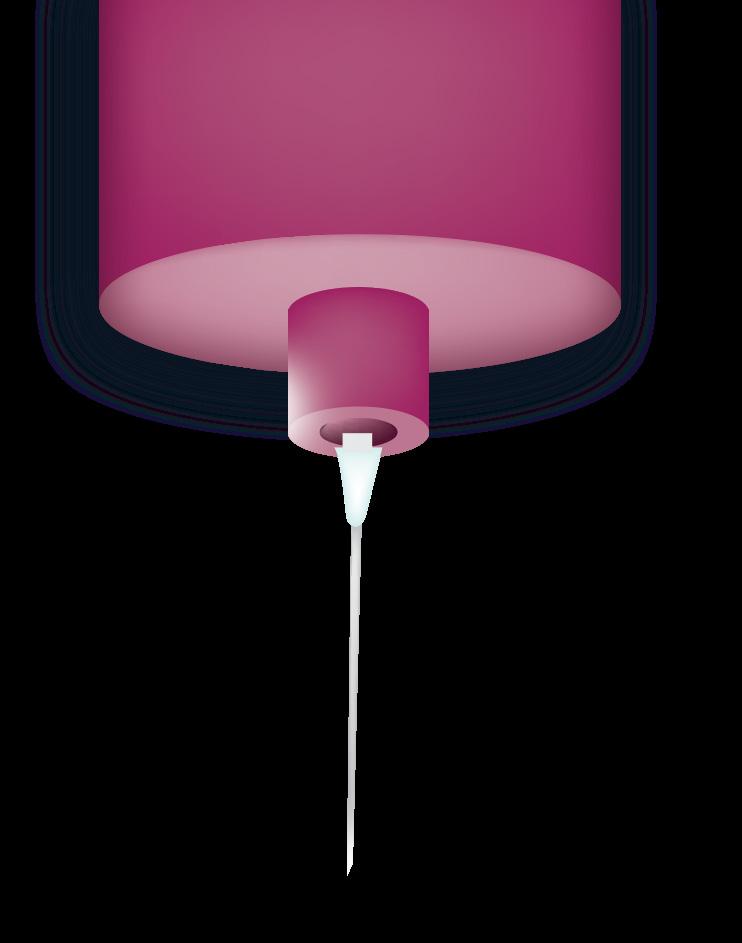
pointed out. Without access to proper sharps disposal, consumers often throw used needles in the trash, flush them or rely on other unsafe disposal options.
Pharmacies “have a real opportunity here to lead the way in safety and sustainability,” she said, by offering her company’s UltiGuard Safe Pack flagship solution. It contains 100 pen needles, along with a built-in FDA-cleared sharps container.
Some other product-related issues include pain during injections or finger pricks, confusion about product compatibility and difficulty handling small components, Gaillard noted. Side-by-side comparisons and trial programs for new or more comfortable products could help.
Moreover, HTL-Strefa’s new Droplet Micron, the thinnest pen needle available in the United States (34G x 3.5mm), the company claimed, also presents a solution on the pain front. According to Gaillard, the ultra-fine size delivers a “virtually painless injection experience,” which could enhance adherence.
On the affordability front, Patton noted that Roche expanded payer coverage for its Accu-Chek diabetes-care products.
“With considerable formulary changes anticipated for diabetes test strips in late 2025 and early 2026, ensuring patients have access to their preferred product at the lowest cost is a critical priority,” he added. Other consumer frustrations are specific to CGMs, which Nadler said “can quickly
feel overwhelming.” The products often are marketed like consumer technology but without the support necessary for proper use.
To help its CGM users here, Quest Health Solutions offers a virtual care model that connects patients with Certified Diabetes Care and Education Specialists for device setup, behavioral coaching and ongoing support.
Many CGMs also have a sensor lifespan of only seven to 15 days, requiring users to replace them regularly, noted Brian Hansen, president of CGM at Parsippany, N.J.-based Ascensia Diabetes Care. In addition, the adhesives used to secure these temporary CGMs to the skin cause rashes and discomfort for some individuals.
Pharmacies could help by ensuring their employees and pharmacists are comfortable speaking about the full range of CGM choices available, he said. And Ascensia’s Eversense 365 CGM, with an implantable sensor, also could address frustrations with temporary CGMs.
Getting real-time information—easily and affordably—is also critical to CGM users, explained Sara Giaimo, PharmD, a pharmacist in the diabetes care business of Abbott Park, Ill.-based Abbott. She noted that Abbott designed its easy-to-use FreeStyle Libre systems with affordability in mind.
“More people pay $0 for Libre than [for] any other CGM,” she noted. “Also, if someone with commercial insurance is charged more than $75 for two sensors, they can contact Abbott’s customer care for an eSavings voucher and start saving right away.”
Abbott also aimed to improve the CGM user experience with the recent launch of its universal Libre app, Giaimo said.
“Now, Libre 2 users can stream data without scanning, and Libre 3 users can silence alarms for up to six hours,” she explained. “Plus, everyone can set alarms that gradually increase in volume to reduce disruptions.” dsn
UlitGuard SafePack UltiMed Inc.
















Transforming Communities
Retailers are making significant community-focused investments to provide disaster relief, support schools and battle food insecurity
By David Orgel
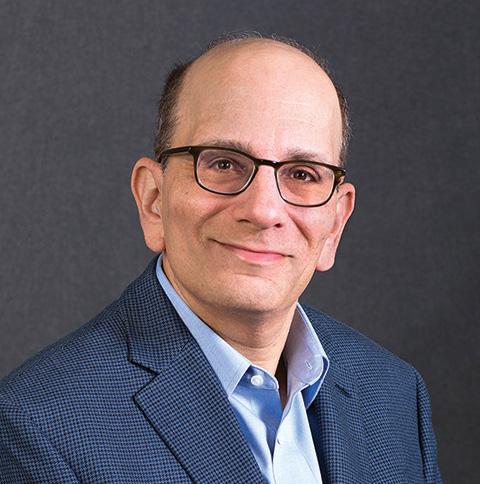
Retailers are focused on selling products, but that isn’t all they do.
They are also anchors of their communities—and that role has been underscored through unique strategies employed by CVS Health, Walgreens, Meijer, Food Lion, Wegmans and others.
Retailers are making investments to battle food insecurity, provide disaster relief and support healthcare and schools—among other areas of focus. They are picking their spots to be as impactful as possible at a time when there is no lack of need. This community support enhances retailers’ reputations, builds engagement with customers and drives health and well-being.
Providing Disaster Relief
Retailers have moved quickly this year to help communities hit by disasters. In the wake of the Los Angeles wildfires in early 2025, Walgreens provided direct product donations and support for impacted team members and collected customer donations for the nonprofit Walgreens Foundation, which raised more than $5.3 million to aid in wildfire recovery efforts.
In another case of disaster relief, Schnucks sprang into action to support its communities after a deadly tornado hit the St. Louis area in May. The retailer’s teammates quickly mobilized and
David Orgel is an award-winning business journalist, industry expert and speaker. He is currently the principal of David Orgel Consulting.
delivered assistance to the neighborhoods. Schnucks followed up by hosting a personal care item drive and a “Round Up at the Register” contribution drive.
Supporting Healthcare Needs
Many retailers have been directing community support to healthcare. The CVS Health Foundation unveiled a program in Hartford, Conn., to address barriers to care and provide resources for individuals with chronic health conditions. Hartford is the headquarters city of the company’s Aetna subsidiary. The foundation announced $2 million in new Health Zones funding to support the Hispanic Health Council’s Family Wellness Center and its agency partners, all located in Hartford. Meanwhile, Southeastern Grocers donated more than $107,000 to eight children’s hospitals across the Southeast, in a partnership with Roc Solid Foundation. Customers made donations to support the effort. The program benefits critical hospital initiatives—from family-centered care to innovative research.
Focusing on Schools and Education
Retailers have a long history of supporting education, and one recent initiative focuses on student athletes. WK Kellogg Co and Meijer worked together to support the next generation of student athletes in the Detroit area, donating $25,000 to strengthen middle school sports programs
at five local schools. It’s worth noting that Wegmans will award more than 1,500 employees with college scholarship tuition assistance—more than $6 million overall—for the 2025 to 2026 school year, a tradition that began in 1984.
Battling Hunger and Nutrition Insecurity
Hunger-relief efforts are integral to the community programs of food and drug store retailers. Food Lion Feeds, the retailer’s hunger-relief platform, has achieved a multi-year goal of providing 1.5 billion meals to address food insecurity in the towns and cities across its 10-state footprint. The company, which has focused on this initiative since 2014, met its goal 10 months early through the generous support of customers and will build on its commitment to reducing food insecurity.
Adding Up the Total Impact
Retailers, including The Giant Company, release annual impact statements to relay their community work—which in Giant’s case recently included initiatives for eliminating hunger and supporting hospitals. It may be impossible to fully measure the collective impact of all community initiatives by food and drug store retailers. What measure would you even use? Dollars? Lives transformed?
If asked about the total impact, I’d focus on one word: invaluable. dsn
